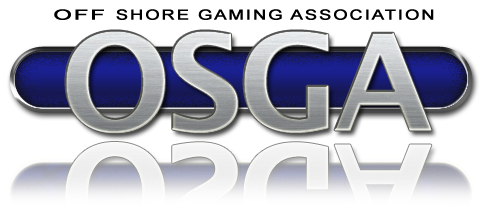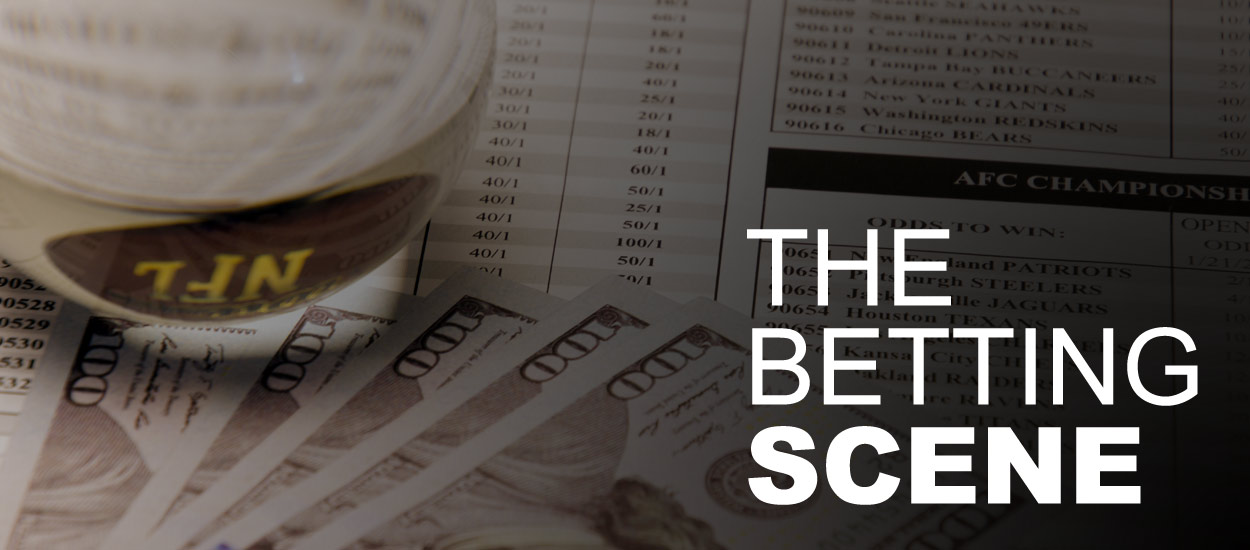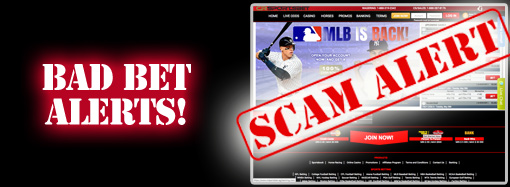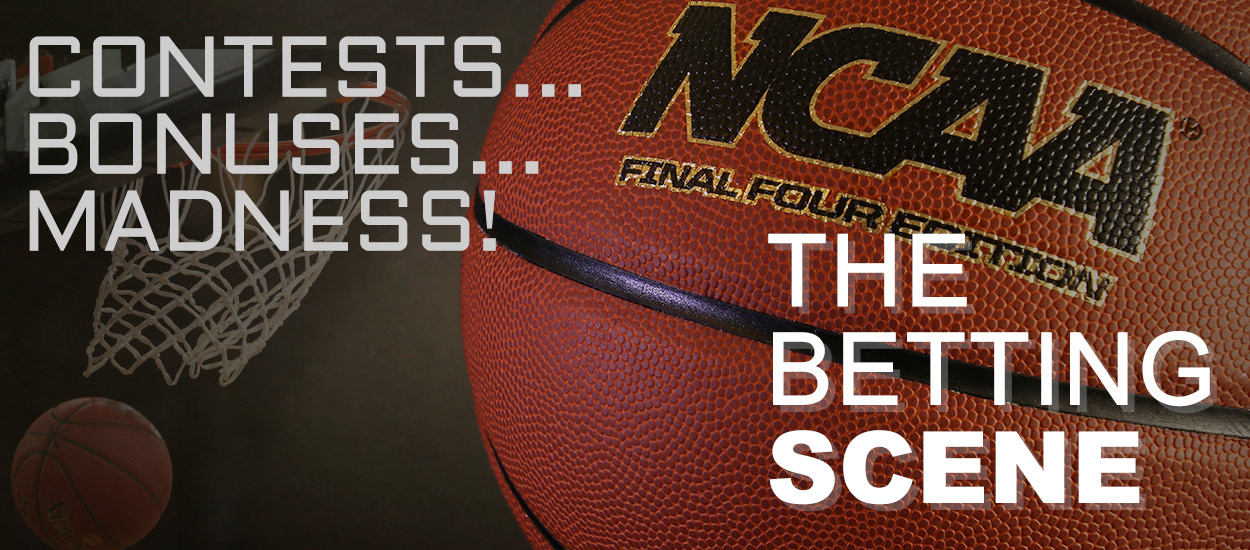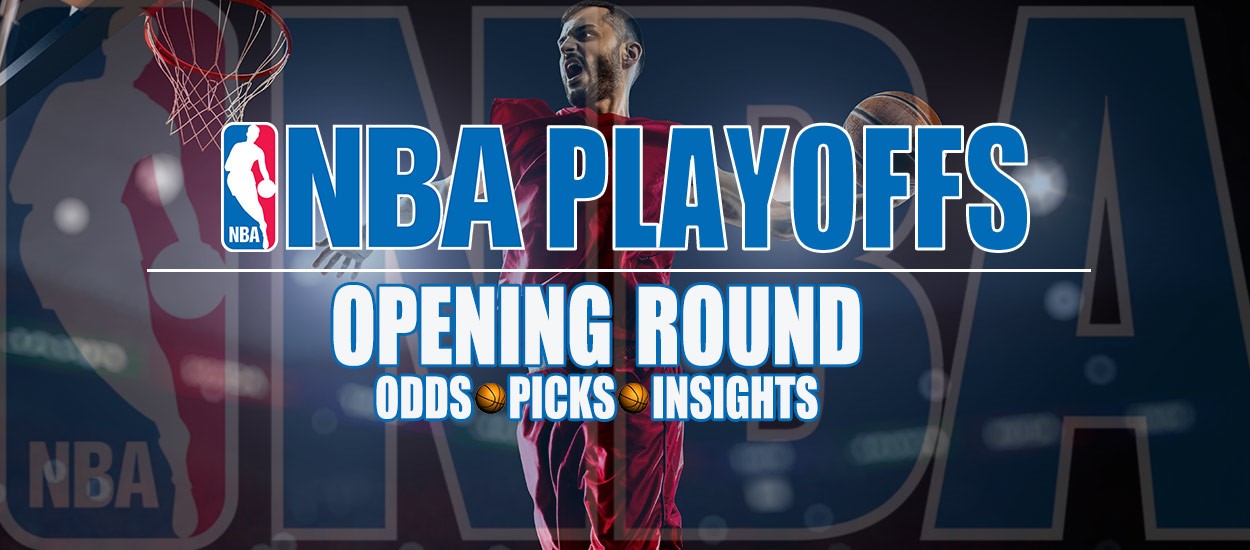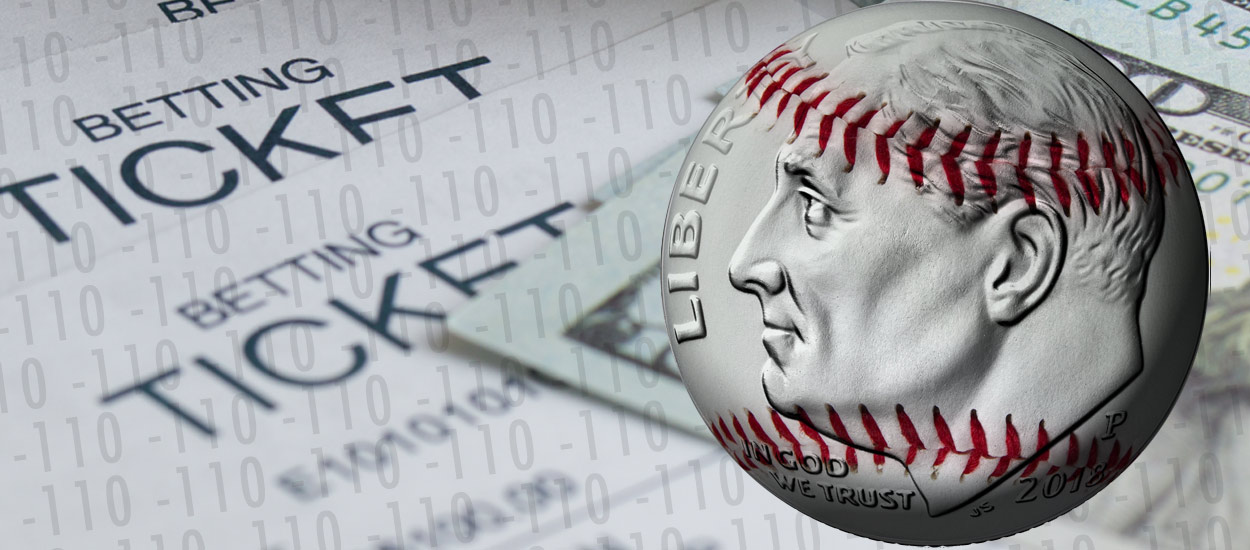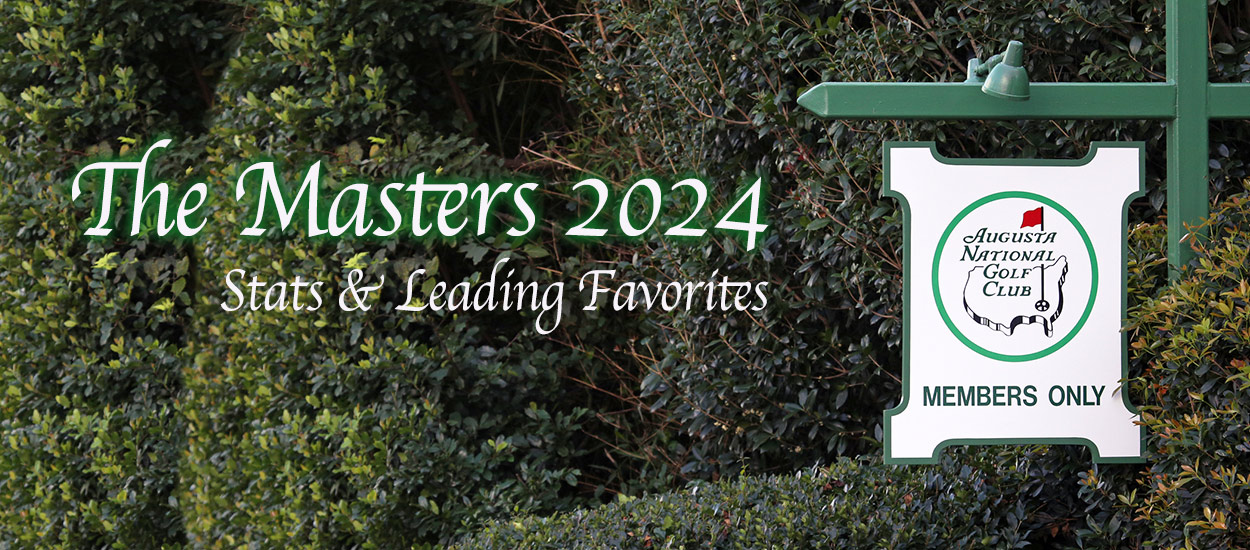IN THE
Supreme Court of the United States
No. ___
_________
JAY COHEN,
Petitioner,
v.
UNITED STATES,
Respondent.
_________
On Petition for a Writ of Certiorari to the
United States Court of Appeals for the Second Circuit
_________
PETITION FOR A WRIT OF CERTIORARI
_________
BENJAMIN BRAFMANMARK M. BAKERMELINDA SARAFABRAFMAN & ROSS, P.C.767 Third Ave. 26th FloorNew York, NY 10017(212) 750-7800 DONALD B. VERRILLI, JR.IAN HEATH GERSHENGORN*JENNER & BLOCK, LLC601 Thirteenth Street, N.W.Washington, DC 20005(202) 639-6000
* Counsel of Record
February 22, 2002
QUESTIONS PRESENTED
1. Under the doctrine first set forth in People v. Powell, 63 N.Y. 88 (1875), the government must prove the existence of a “corrupt motive”–generally knowledge of the illegality of the underlying conduct–in a prosecution for a conspiracy to commit an act that is innocent in itself but forbidden by statute. On three prior occasions, this Court has reserved the question whether the long-standing Powell doctrine applies in a prosecution under the general federal conspiracy statute, 18 U.S.C. § 371. The question presented is whether the Second Circuit, in conflict with the decisions of numerous other Circuits, erred in holding that the Powell doctrine did not apply under 18 U.S.C. § 371.
II. Section 1084 of Title 18 prohibits “knowingly” transmitting certain interstate “bets or wagers,” and it prohibits knowingly transmitting information assisting in the placing of bets or wagers unless the information is transmitted to and from jurisdictions in which such betting is “legal.” The question presented is whether the Second Circuit, in conflict with decisions of numerous courts of appeals and with principles articulated by this Court, erred in defining the principal terms of 18 U.S.C. § 1084–“legal,” “knowingly,” and “bets or wagers”–to permit a conviction based on conduct that neither relevant jurisdiction has criminalized and that the defendant believes is not a bet or wager but instead is merely information assisting in the placing of a bet.
PETITION FOR A WRIT OF CERTIORARI
Jay Cohen respectfully petitions for a writ of certiorari to review the judgment of the United States Court of Appeals for the Second Circuit in this case.
OPINION BELOW
The opinion of the court of appeals (Pet. App. 1a-18a) is reported at 260 F.3d 68.
JURISDICTION
The court of appeals entered its judgment on July 31, 2001 (Pet. App. 1a), and denied a timely petition for rehearing and suggestion for rehearing en banc on October 25, 2001 (Pet. App. 19a). On January 11, 2002, Justice Ginsburg extended the time for filing a petition for a writ of certiorari to and including February 22, 2002. This Court has jurisdiction under 28 U.S.C. § 1254(1).
STATUTORY PROVISIONS INVOLVED
The statutes at issue in this case are 18 U.S.C. § 371 and 18 U.S.C. § 1084. Those provisions are reprinted in full at Pet. App. 20a-22a.
STATEMENT OF THE CASE
This case presents critical questions as to the scope of the federal conspiracy statute, 18 U.S.C. § 371, and 18 U.S.C. § 1084 (the “Wire Act”) in the important context of Internet gambling. In the decision below, the Second Circuit affirmed the conviction under these statutes of Jay Cohen, an Internet entrepreneur who started a sports betting company modeled on state-approved off-track betting facilities. In so doing, the Second Circuit interpreted these provisions of the federal criminal code so as to criminalize otherwise innocent conduct, creating conflicts with numerous decisions of this Court and the Circuits and expanding the scope of these statutes far beyond what Congress intended.
The Second Circuit’s decision effectively criminalizes significant portions of two highly regulated and otherwise legal industries–the off-shore wagering industry and the off-track betting industry–that employ thousands of people and handle billions of dollars in transactions. Under the Second Circuit’s decision, these businesses and their employees stand, like petitioner, wrongly accused of criminal conduct and threatened with financial ruin, in plain violation of congressional intent.
A. The Formation of World Sports Exchange
In 1996, petitioner Jay Cohen, a twenty-nine-year-old U.C. Berkeley graduate, held a lucrative position as a top trader at Group One, a San Francisco firm trading in options and derivatives. Intrigued by the interest shown by his fellow traders in casual sports betting that mimicked the operation of the financial markets–trading in so-called sports “futures”–Mr. Cohen and his colleagues explored the possibility of establishing an Internet business that would permit such betting.
After conducting extensive due diligence, Mr. Cohen learned that several apparently legitimate business models existed. He discovered, for example, that the New York Off-Track Betting Corporation, as authorized by the state of New York, allowed out-of-state customers to establish accounts in New York and to give telephone instructions for wagers to be placed from those accounts. He also discovered that Sports International, a publicly traded company that had Congress’s former majority whip on its Board of Directors, was already conducting a sports wagering business based off-shore, as were a number of other companies.
Mr. Cohen turned to the international consulting firm of KPMG for help in establishing and licensing his sports betting business. KPMG initially informed Mr. Cohen that its in-house counsel would have to approve its involvement in a sports betting enterprise. Shortly thereafter, KPMG told him that the necessary authorization had been given. In addition, both KPMG and the law firm of Orrick, Herrington & Sutcliffe approved various corporate materials prepared by Mr. Cohen and his associates in connection with a private placement. A.625, 644.
After raising the necessary seed money, Mr. Cohen and his colleagues moved to Antigua, where betting is entirely legal and where strict licensing requirements and regulations are in place. KPMG helped to incorporate Mr. Cohen’s sports business in Antigua and successfully worked with the Antiguan government to help Mr. Cohen obtain the necessary licenses, which WSE held at all times relevant to this matter.
In early 1997, Mr. Cohen launched World Sports Exchange (“WSE”). WSE was established as an “account wagering” operation, patterned after the New York OffTrack Betting Corporation. In an account wagering system, a customer establishes and funds an account where the wagering operation is located–in WSE’s case, in Antigua–and then from time to time authorizes, via telephone or Internet, the use of funds from that account to place wagers. The wagers themselves take place, however, only after the wagering operation ensures that there are sufficient funds in the account to cover the requested wager and that the wager otherwise complies with the operation’s guidelines. WSE’s rules and regulations provided explicitly that “[a]ll wagers . . . take place at our server in Antigua,” and made clear that WSE “reserves the right to refuse any wager prior to its acceptance.” A.300, 348. Indeed, although WSE advertised throughout the world, all of its actual operations were confined solely to Antigua. A.511.
From WSE’s inception, Mr. Cohen operated the business openly as a lawful and legitimate enterprise. For example, consistent with the tax advice he had received from KPMG, Mr. Cohen reported all of his income to the United States, reported that his business was “wagering,” and paid all relevant taxes.
Indeed, Mr. Cohen quickly became the public face of the burgeoning off-shore wagering industry. His business was featured in a 1997 article in the Wall Street Journal as well as in various other media. See, e.g., Rebecca Quick, Entrepreneurs Roll the Dice on a New Site, Wall St. J., Apr. 10, 1997, at B18. Mr. Cohen debated United States officials on live national television, submitted to Congress written testimony–which included a detailed description of WSE’s account-wagering operations–on pending legislation, and spoke at numerous venues in the United States.
2. District Court Proceedings
In late 1997 and early 1998, at the prompting of a prominent New York law firm representing the NFL, NBA, NHL, and Major League Baseball, the FBI began an investigation of WSE. Following that investigation, the government filed a criminal complaint naming Mr. Cohen; he then voluntarily returned to the United States, although he was not subject to extradition from Antigua, and was arrested. Mr. Cohen was ultimately indicted in the Southern District of New York and charged with (1) one count of violating 18 U.S.C. § 371, the general conspiracy statute, by conspiring to violate 18 U.S.C. § 1084 and (2) seven substantive counts of violating and aiding and abetting violations of § 1084. All of these charges were based on Mr. Cohen’s operation of WSE, and each of the substantive counts was based on a phone call or Internet connection made by undercover FBI agents in New York.
Prior to trial, Mr. Cohen moved to dismiss all counts, arguing that he lacked the necessary mens rea for both the conspiracy and substantive offenses, that his actions fell within the scope of the safe harbor provided by § 1084(b), and that the United States lacked jurisdiction to prosecute him. The motion was denied.
At trial, the government’s case centered on the testimony of a private investigator employed by the sports leagues’ law firm and of undercover government agents. These agents had (like WSE’s other clients) opened and funded accounts with WSE; contacted WSE via telephone and Internet and authorized the placement of bets; and received any winnings in their accounts as requested. Mr. Cohen’s motion for a judgment of acquittal on all counts at the close of the government’s case was denied.
Mr. Cohen’s principal defense was that he had intended from the start to establish a lawful business and that he believed in good faith that he had done so. Mr. Cohen testified about the founding of WSE, the advice and assistance he received from KPMG, Group One, and Orrick Herrington, and his role as an unofficial industry spokesman. He testified that he “wanted to do this legally,” that he therefore moved to Antigua and located the entire business there, and that he “modeled” WSE “after Capital Off-Track Betting in New York.” He explained his reliance on a published statement of a Justice Department official that off-shore wagering was outside the scope of U.S. law. He also explained his good faith belief that WSE’s use of an account wagering system ensured that only information assisting in the placing of the bet is transmitted between WSE and its customers, as well as his belief that any actual bet “takes place [in Antigua].” A.511-12, 521-51, 603-66.
The district court’s charge to the jury, however, eviscerated Mr. Cohen’s good faith defense. First, the court noted that any “evidence to the effect that the defendant did not think that he was violating the statute” was “basically irrelevant.” As long as Mr. Cohen “d[id] the deeds and kn[ew] that he was doing the deeds,” then he was guilty “regardless of whether he considered that he was setting his business up in a way to avoid that, or regardless of whether he had an impression from some source or another that he wasn’t violating the law.” A.878-83. The court also instructed the jury that “anything that you have heard about New York state law, or off-track betting, is really not relevant to our case because the case doesn’t arise under the off track betting regulations of New York State.” A.857.
Second, the court refused to allow the jury even to consider the safe harbor contained in § 1084(b), which protects a defendant from criminal liability for transmission of “information assisting in the placing of bets or wagers” on a sporting event if the information is sent “from a State or foreign country where betting on that sporting event or contest is legal into a State or foreign country in which such betting is legal.” 18 U.S.C. § 1084(b). Although the court conceded that betting in New York is not a “violation of a specific criminal law,” the court nonetheless held that “this kind of betting was not and is not legal under New York law.” A.711-28.
Third, the court’s charge precluded any argument that the transmissions in question involved “information assisting in the placing of bets or wagers” rather than “bets or wagers” themselves. The court’s charge also disparaged the defendant’s belief that the bets took place or occurred only in Antigua as “a fiction [that] would avoid the facts that are relevant under the statute.” A.873-75.
In response to specific questions from the jury during its deliberations, the district court reiterated and clarified that defendant’s good faith belief in the legality of his conduct was irrelevant. The court emphasized that a defendant could be convicted of conspiracy “even if he was ignorant that the deeds violated the statute,” and could be convicted of the underlying offenses “if he did . . . the deeds, and if he knew that the deeds were done.” Moreover, when the jury asked for a full copy of § 1084 and a read-back of Mr. Cohen’s testimony concerning his knowledge of § 1084 (which included testimony that he understood his conduct to fall within the § 1084(b) “exception”), the judge provided a copy of § 1084(a), titled it simply “§ 1084,” and refused to provide a copy of § 1084(b)–and he re-instructed the jurors that § 1084(b) was irrelevant to their task. A.930-44, 964-79.
Following these additional instructions, the jury found Mr. Cohen guilty on all eight counts. The district court sentenced Mr. Cohen to twenty-one months of imprisonment and two years of supervised release, and imposed a special assessment of $800 and a fine of $5,000.
3. The Court of Appeals Decision
In an opinion authored by District Judge Keenan, sitting by designation, the court of appeals affirmed.
With respect to the conspiracy conviction, the court rejected Mr. Cohen’s argument that the district court’s rulings on mens rea could not be squared with the long-standing “Powell doctrine.” As the Second Circuit recognized, under People v. Powell, 63 N.Y. 88 (1875), “[p]ersons who agree to do an act innocent in itself, in good faith and without the use of criminal means, are not converted into conspirators [] because it turns out that the contemplated act was prohibited by statute.” Pet. App. 5a (internal quotation marks omitted).
The Second Circuit conceded that “[t]he Powell doctrine was echoed in federal cases from the first half of the last century,” but concluded nevertheless that “the Powell doctrine does not apply to a conspiracy to violate 18 U.S.C. § 1084.” Id. 5a-7a. In reaching this conclusion, the court of appeals made no effort to explain why Congress, when it enacted the current version of the conspiracy statute in 1948, did not intend to incorporate a doctrine that was by then well settled in federal courts. Instead, the court asserted that recently “many circuits have . . . , in effect, moved away from the doctrine,” noted prior instances of Second Circuit dicta disapproving of the doctrine, and observed that the commentary to the Model Penal Code rejects Powell’s reasoning. Id. The court also relied (without analysis) on this Court’s decision in United States v. Feola, 420 U.S. 671 (1975), even though Feola reserved expressly the question of Powell’s applicability. See Pet. App. 7a.
The court of appeals next determined that Mr. Cohen’s actions did not fall within the scope of § 1084(b)’s safe harbor. The court did not dispute Mr. Cohen’s contention that the placing of bets is not a crime in New York, but found that, under the “plain meaning” of the term “legal,” state civil law proscriptions were sufficient to transform WSE’s business into a federally criminal enterprise. Id. 8a. The court sought to distinguish the First Circuit’s contrary decision in Sterling Suffolk Racecourse Ltd. Partnership v. Burrillville Racing Ass’n, 989 F.2d 1266 (1st Cir. 1993), on the ground that the case arose in the context of a RICO claim and not in “a § 1084 prosecution,” even though the predicate offense alleged in that RICO case was a violation of § 1084. Pet. App. 9a.
Further, although it found further safe-harbor-related issues to be “immaterial” in light of its legality ruling, the Second Circuit concluded that the transmissions in question were transmissions of “bets or wagers” (and thus not subject to § 1084(b))–not transmissions of “information assisting in the placing of bets or wagers.” Id. 10a-12a. Attaching no significance to the “account wagering” system established by WSE and its similarity to the system used by state-approved New York Off-Track Betting Corporation (and authorized by many other states and governments around the world), the court concluded that “bets” were transmitted because “someone in New York signaled an offer to place a particular bet” and “someone at WSE signaled an acceptance of that offer.” Id. 11a.
The court also cursorily rejected Mr. Cohen’s argument that he did not “knowingly” transmit a bet or wager because he understood that the account wagering system transmitted only “information assisting in the placing of bets or wagers,” not a bet or wager itself. The court concluded that “it mattered only that Cohen knowingly committed the deeds forbidden by § 1084,” and that Mr. Cohen’s “own interpretation regarding what constituted a bet was irrelevant.” Id. 13a.
Finally, the court of appeals rejected Mr. Cohen’s arguments that the rule of lenity should inform the court’s interpretation of the terms “legal” and “bets or wagers,” neither of which is defined in the statute. The court found that these terms did not create a “grievous ambiguity”–or, indeed, any ambiguity at all–as applied in this case. Id. 13a-15a.
REASONS FOR GRANTING THE WRIT
The Second Circuit interpreted both the federal conspiracy statute and the federal Wire Act in ways that dramatically expand the reach of those statutes and criminalize innocent conduct. This decision creates and deepens conflicts with decisions of this Court and the courts of appeals, and threatens two large, flourishing, and highly regulated industries.
With respect to the federal conspiracy statute, the Second Circuit refused to apply the longstanding Powell doctrine, which requires a “corrupt motive”–often knowledge of the illegality of the underlying conduct–for conspiracy to commit an act that is “innocent in itself” but forbidden by statute. That holding places the Second Circuit in direct conflict with numerous decisions from the courts of appeals on a question this Court has reserved at least three times. Moreover, the Second Circuit’s rejection of Powell permits the “infliction of criminal punishment on the unaware,” United States v. International Minerals & Chemical Corp., 402 U.S. 558, 565 (1971) (Stewart, J., dissenting), in disregard of congressional intent.
With respect to the Wire Act, the Second Circuit misread the critical terms of the statute, thereby exacerbating the existing confusion in the Circuits as to the meaning of these terms. The Second Circuit’s broad reading of “legal” and “bets or wagers” and the court’s misapplication of the statute’s mens rea requirement effectively eliminate from the statute the safe harbor provision that Congress created and obliterate the careful statutory distinctions between information assisting in the placing of bets and wagers and the bets and wagers themselves.
In so doing, the Second Circuit’s decision threatens serious harm to the off-shore wagering industry and the off-track betting industry, and it intrudes unnecessarily on the sovereignty of the States and foreign governments that regulate those industries, which employ thousands of people and handle billions of dollars in transactions that the relevant governments have determined should not be criminalized. Under the Second Circuit’s decision, these businesses and their employees, like petitioner, are placed in criminal and financial jeopardy.
Accordingly, the instant petition should be granted.
4. The Second Circuit’s Rejection of the “Powell Doctrine” Squarely Conflicts with the Decisions of Other Circuits and Erroneously Decides an Important Question That this Court Has Reserved Expressly on At Least Three Occasions.
This case presents squarely a question that has divided the Circuits and that this Court has reserved on at least three prior occasions, namely, whether the government must prove the existence of a “corrupt” motive for conspiracy to commit an offense that is merely malum prohibitum, rather than malum in se. Because this question is of critical importance and because the Second Circuit misapplied and ignored critical precedent from this Court, the petition should be granted.
1. In People v. Powell, 63 N.Y. 88 (1875), the New York Court of Appeals overturned convictions for conspiracy by public officials to purchase supplies without first advertising for suppliers, distinguishing between the mens rea required for the underlying substantive offense and the mens rea required for the separate crime of conspiracy. The court held that “to make an agreement between two or more persons, to do an act innocent in itself, a criminal conspiracy, it is not enough that it appears that the act which was the object of the agreement was prohibited. The confederation must be corrupt.” Id. at 92.
The Powell doctrine quickly “won general acceptance.” Developments in the Law–Criminal Conspiracy, 72 Harv. L. Rev. 920, 936-37 (1959). In Landen v. United States, 299 F. 75 (6th Cir. 1924), for example, the Sixth Circuit overturned a conviction for conspiracy to sell liquor without the necessary permit, explaining that where the underlying offense is merely malum prohibitum, a conviction is improper unless there is “a ‘corrupt intent,’ which is interpreted to be the mens rea, the conscious and intentional purpose to break the law.” Id. at 78-79 (citing Powell). Similarly, in Cruz v. United States, 106 F.2d 828 (10th Cir. 1939), the Tenth Circuit explained that “a corrupt motive or intent must be shown” to find defendants guilty of conspiracy to violate the Emergency Relief Appropriation Act of 1937. Id. at 830; see Fall v. United States, 209 F. 547, 553 (8th Cir. 1913) (relying on Powell’s New York progeny); Pereles v. Weil, 157 F. 419, 422, 425-26 (E.D. Wis. 1907); see also United States v. Previte, 648 F.2d 73, 81-82 (1st Cir. 1981). See generally United States v. Barker, 514 F.2d 208, 233 (D.C. Cir. 1975) (Bazelon, C.J., concurring) (collecting cases).
Although the Second Circuit expressly acknowledged the existence of a split among the Circuits, see Pet. App. 5a, the court minimized the continuing significance of that split. But the dispute between the Circuits remains alive. None of the decisions with which the Second Circuit has put itself in conflict has ever been questioned by the court that issued it, let alone limited or overruled–and a number of courts have continued to acknowledge and apply the Powell doctrine. In United States v. Previte, 648 F.2d 73 (1st Cir. 1981), for example, the First Circuit recognized the existence of the doctrine but found it inapplicable in a case in which the underlying substantive offense, the receipt of gratuities by a public official, required “guilty knowledge.” Id. at 81-82. And a district court in Michigan, applying the Sixth Circuit’s still authoritative 1924 decision in Landen, relied on the Powell doctrine to acquit a defendant of a charge of conspiracy to violate the Gun Control Act. See United States v. Reminga, 493 F. Supp. 1351, 1360-61 (W.D. Mich. 1980); compare, e.g., United States v. Mitlof, 165 F. Supp. 2d 558, 565-68 (S.D.N.Y. 2001) (finding question left open in Feola at least partially foreclosed by the Second Circuit decision here).
Moreover, this Court has expressly reserved this very question on at least three occasions. In United States v. Freed, 401 U.S. 601 (1971), for example, this Court upheld a conspiracy conviction involving the acquisition and possession of hand grenades, an object that the Court described as “hardly . . . innocent in itself.” Id. at 609 n.14. The Court flagged and set aside the issue of whether a conspiracy to carry out an innocent act that is “not known by the alleged conspirators to be prohibited must be actuated by some corrupt motive other than the intention to do the act which is prohibited and which is the object of the conspiracy.” Id.
A year later, in Pipefitters Local Union No. 562 v. United States, 407 U.S. 385 (1972), this Court assumed without deciding that the Powell doctrine applied, and held that the doctrine would not afford petitioners greater relief than that to which they were entitled on other grounds. See id. at 401 n.11.
In United States v. Feola, 420 U.S. 671 (1975), this Court rejected a mens rea challenge to a conspiracy conviction, but noted that the underlying assault committed by the defendants was “clearly wrongful conduct.” Id. at 691-92. The Court thus expressly declined to answer the central question posed by Powell: “whether it is fair to punish parties to an agreement to engage intentionally in apparently innocent conduct where the unintended result of engaging in that conduct is the violation of a criminal statute.” Id. at 691; see also id. at 688-93.
2. In rejecting the Powell doctrine, the Second Circuit mischaracterized the relevant inquiry and misinterpreted and ignored relevant precedent from this Court.
The Second Circuit conceded that “federal cases from the first half of the last century” incorporated the Powell doctrine into federal conspiracy prosecutions. The court failed to realize, however, that the early twentieth-century decisions approving of the Powell doctrine are not only of undiminished vitality, see supra pp. 11-13, but are also of crucial importance in determining the intent of the Congress that re-enacted the federal conspiracy statute. See, e.g., United States v. Dege, 364 U.S. 51, 51, 53 (1960); Central Bank of Denver, N.A. v. First Interstate Bank of Denver, N.A., 511 U.S. 164, 185-86 (1994) (“When Congress reenacts statutory language that has been given a consistent judicial construction, we often adhere to that construction in interpreting the reenacted statutory language.”).
The current version of 18 U.S.C. § 371, the general federal conspiracy statute, dates from 1948. At the time of that re-enactment, the federal courts had consistently applied the Powell doctrine under the relevant statutory language. See Landen, 299 F. at 78-79 (noting that “the text-books and elementary discussions seem to agree” on the necessity for a corrupt intent, and explaining that the Powell case “has stood for 50 years as the leading one on the subject, and . . . has never, so far as we find, been questioned”); see also Cruz, 106 F.2d at 830; Fall, 209 F. at 553; Pereles, 157 F. at 422, 425-26; see also generally Keegan v. United States, 325 U.S. 478, 493-94 (1945); United States v. Crimmins, 123 F.2d 271, 273 (2d Cir. 1941); Barker, 514 F.2d at 233 (Bazelon, C.J., concurring); 2 Francis Wharton, A Treatise on Criminal Law § 1606, at 1749-50 (11th ed. 1912). Further, numerous state courts had adopted Powell prior to the re-enactment of the federal conspiracy statute. See generally Developments, supra, at 936-37.
The other justifications offered by the Second Circuit for its rejection of Powell similarly cannot survive scrutiny. The court of appeals suggested, for example, that Feola “rejected the notion that a federal conspiracy conviction required proof of scienter,” Pet. App. 7a, but the court failed to acknowledge that Feola itself disclaimed any intent to decide the Powell question.
The Second Circuit also cited a suggestion from the American Law Institute that Powell rests on a “melodramatic and sinister view of conspiracy.” Pet. App. 6a-7a. To the contrary, however, the Powell doctrine is solidly grounded in the policies identified by this Court as underlying the law of conspiracy: “protection of society from the dangers of concerted criminal activity,” Feola, 420 U.S. at 693, the need for “preventative action” once “[c]riminal intent” to commit a substantive crime has “crystallized,” id. at 694, the difficulty of detecting activity that is likely to be “characterized by secrecy,” United States v. Rabinowich, 238 U.S. 78, 88 (1915), and prevention of “crimes unrelated to the original purpose for which the group was formed,” Callanan v. United States, 364 U.S. 587, 593-94 (1961). When a defendant such as Mr. Cohen agrees to carry out acts that are innocent in themselves, and the “conspirators” do not have actual knowledge that the acts are forbidden, there is no threat that the group will provide an “education in crime” or move on to other, more dangerous projects, or that it will conceal the very activities that it believes to be wholly innocuous. See, e.g., Developments, supra, at 936 (explaining that “it is difficult to say that a grouping is inherently antisocial and poses a continuing threat merely because a contemplated act which it thinks to be lawful is in fact unlawful”); Reminga, 493 F. Supp. at 1361.
Indeed, the instant case illustrates the wisdom of the Powell doctrine. Far from “characterized by secrecy,” Mr. Cohen’s “conspiracy” has been entirely open: it has been advertised globally, featured in the Wall Street Journal, debated on national television, and publicly described in voluntary written testimony to Congress. Nor is there the slightest suggestion that Mr. Cohen or his colleagues are connected in any way to any criminal activity (apart from the present convictions). Under these circumstances, unless some corrupt motive is required for conviction, the “policies behind the imposition of conspiratorial liability [are] not served.” Feola, 420 U.S. at 693.
Finally, the Second Circuit’s rejection of the Powell doctrine is in tension with this Court’s decision in Keegan v. United States, 325 U.S. 478 (1945), a case that was cited to the Second Circuit but ignored entirely in its opinion. In Keegan, the defendants explicitly relied on Powell in challenging their convictions under the Selective Service Act of 1940 for conspiracy to knowingly counsel evasion of military service, contending that they lacked the requisite corrupt motive because they intended only to create a test case to challenge the Act. In addition to finding insufficient evidence to support a finding that the defendants counseled “evasion,” the lead opinion implicitly endorsed the “corrupt motive” view of conspiracy, criticizing a jury charge that stated that “innocent motives and a desire to test the validity of the law were not a defense,” and explaining that such a charge meant “nothing short of this . . . : If defendants had innocent motives they are nonetheless guilty; if they had guilty motives they, of course, are guilty.” Id. at 494 (opinion of Roberts, Frankfurter, and Murphy, JJ.).
3. Re-examination of Keegan and resolution of the disagreement between the Circuits as to the issue left unanswered by Feola are important tasks with broad implications. The number of conspiracy prosecutions for violations of § 1084 through operation of a business similar to Mr. Cohen’s has recently increased and is likely to continue to do so. See, e.g., Adrian Goss, Jay Cohen’s Brave New World: The Liability of Offshore Operators of Licensed Internet Casinos for Breach of United States’ Anti-Gambling Laws, 7 Rich. J.L. & Tech. 32, 78 (2001) (quoting Attorney General Reno’s statement that operators “can’t hide online, and . . . can’t hide offshore”). The divergence between the approaches of the different Circuits to the Powell doctrine invites forum-shopping by prosecutors, especially when their target is one of the many businesses like WSE that operate over the Internet and thus reach into numerous jurisdictions. The same rule of criminal conspiracy law ought to apply to such a business (and its employees) regardless of which jurisdiction the government chooses as the locus of undercover wire transmissions.
More generally, it remains true, more than 75 years after Judge Learned Hand first made the observation, that conspiracy is the “darling of the modern prosecutor’s nursery.” Harrison v. United States, 7 F.2d 259, 263 (2d Cir. 1925). Thousands of defendants are subject to federal prosecution pursuant to § 371 each year. See, e.g., Beth Allison Davis & Josh Vitullo, Federal Criminal Conspiracy, 38 Am. Crim. L. Rev. 777, 778 n.9 (2001). Given the wide range of mala prohibita offenses, a number of these cases have presented and will present–outside of the § 1084 context–the issue reserved in Feola and squarely raised by the case at hand. See, e.g., Mitlof, 165 F. Supp. 2d at 565-68; see also John Shepard Wiley Jr., Not Guilty By Reason of Blamelessness, 85 Va. L. Rev. 1021, 1061-62 (1999).
Finally, this case “stirs large questions–questions that go to the moral foundations of the criminal law. Whether postulated as a problem of ‘mens rea,’ of ‘willfulness,’ of ‘criminal responsibility,’ or of ‘scienter,’ the infliction of criminal punishment upon the unaware has long troubled the fair administration of justice.” International Minerals, 402 U.S. at 565 (Stewart, J., dissenting). The Powell issue is directly presented and preserved here, and the Court should take this opportunity to elucidate the mens rea requirements of the federal conspiracy statute and to resolve the disagreement among the Circuits by finally clarifying the scope of Keegan and answering the question expressly left open by Feola, Freed, and Pipefitters.
5. The Second Circuit’s Interpretation of § 1084 Squarely Conflicts with Numerous Decisions of this Court and the Courts of Appeals, Erroneously Resolves Several Provisions of a Critically Important Statute, and Effectively Criminalizes Innocent Conduct.
1. The Second Circuit’s holding that “legal” incorporates violation of both criminal and civil law conflicts with numerous decisions of the Circuits and is unsupportable.
Section 1084(b)’s safe harbor removes from § 1084(a) the “transmission of information assisting in the placing of bets or wagers” when the information is transmitted to and from a State or foreign country in which “such betting is legal.” 18 U.S.C. § 1084(b). There is no dispute that betting is legal–indeed, actively licensed and encouraged–in Antigua, where Mr. Cohen’s business was wholly located. The only question, then, is whether such betting is “legal” in New York. The court of appeals answered this question by relying only on non-criminal provisions of New York law: the New York Constitution, which sets forth a general policy but is not self-enforcing, and a provision of New York’s civil statutes that provides generally that “[a]ll wagers, bets or stakes . . . shall be unlawful.” Pet. App. 8a, 15a (citing N.Y. Const. art. I, § 9 and N.Y. Gen. Oblig. L. § 5-401). In doing so, the court not only created a conflict with a decision of the First Circuit involving § 1084, Sterling Suffolk Racecourse Ltd. Partnership v. Burrillville Racing Ass’n, 989 F.2d 1266 (1st Cir. 1993), and with decisions of other Circuits regarding similar gambling-related federal criminal statutes, but also effectively criminalized conduct that the States have determined should not be criminalized, thereby seriously undermining Congress’ deliberate effort to preserve comity with the States.
In Sterling, the First Circuit considered a dispute between a race track and an off-track betting (“OTB”) facility involving a civil RICO claim that alleged a violation of § 1084 as the required indictable predicate offense. The track alleged that the OTB facility’s conduct could not be “legal” in the relevant states for the purposes of § 1084(b) because it violated the federal Interstate Horseracing Act (“IHA”), 15 U.S.C. §§ 3001-3007. The First Circuit rejected that argument, noting that the IHA had “purely civil consequences” and that its remedies did not include “the specter of criminal penalties.” Sterling, 989 F.2d at 1273. The First Circuit continued: “[W]e think it clear that Congress, in adopting section 1084, did not intend to criminalize acts that neither the affected states nor Congress itself deemed criminal in nature. [Defendant’s] acts fall into this chiaroscuro category–perhaps not right, but certainly not felonious. It follows that these acts [are] not indictable under section 1084 . . . .” Id.; see also, e.g., United States v. Kelley, 254 F. Supp. 9, 15 (S.D.N.Y. 1966) (noting that § 1084 sought to curtail use of the wires “to violate state penal statutes” (emphasis added)), aff’d in part, rev’d in part on other grounds, 395 F.2d 727 (2d Cir. 1968).
The Second Circuit attempted to distinguish Sterling on the ground that the First Circuit “did not speak in the context of a criminal prosecution.” Pet. App. 9a. But this is a distinction without a difference. In order to dispose of the RICO claim, the First Circuit had to (and did) resolve the question whether the challenged conduct constituted an indictable offense under § 1084–and it did so in precisely the manner that was urged by Mr. Cohen and rejected by the Second Circuit.
The Second Circuit’s decision is also inconsistent with the Ninth Circuit’s decision in United States v. Gordon, 464 F.2d 357 (9th Cir. 1972) (per curiam), interpreting 18 U.S.C. § 1955. Section 1955 makes it criminal to conduct an “illegal gambling business,” defined by statute to mean a business that “is a violation of the law of a State or political subdivision in which it is conducted.” Applying the rule of lenity, the Ninth Circuit held that the pivotal words “the law of a State” should be construed to cover only gambling businesses that are “in violation of state penal laws.” Id. at 358. The Eighth Circuit recently applied Gordon to dispose of a civil RICO claim premised on an alleged violation of § 1955. See People ex rel. Small v. Harrah’s-North Kansas City Corp., 208 F.3d 218 (8th Cir. 2000) (unpub. table op.) (citing Gordon for proposition that a “gambling business must violate state criminal law, rather than civil law, to fall within prohibition in 18 U.S.C. § 1955”). Cf. United States v. Hagen, 951 F.2d 261, 263-64 (10th Cir. 1991) (assuming arguendo that state law violation under § 1955 must be “penal”); United States v. Stewart, 205 F.3d 840, 842 (5th Cir. 2000) (same).
Similarly, a number of Circuits have found that 18 U.S.C. § 1952 (the “Travel Act”), which was enacted on the same day as § 1084 and which forbids interstate travel involving gambling (and other activities) “in violation of the laws of the [relevant] State,” is not transgressed by mere violation of a state regulation, and a number of courts have also stated that a state criminal provision must be at issue. See, e.g., United States v. DeLuna, 763 F.2d 897, 907 (8th Cir. 1985); United States v. Finazzo, 704 F.2d 300, 307 (6th Cir. 1983); United States v. Polizzi, 500 F.2d 856, 872-75 (9th Cir. 1974); United States v. Ferber, 966 F. Supp. 90, 102 (D. Mass. 1997). Cf. United States v. Nardello, 393 U.S. 286, 290-91, 295 (1969) (assuming that relevant state law under the Travel Act consists of state “criminal prohibitions”).
These decisions recognize that the statutes in question, all of which have the same underlying purposes and should thus be interpreted in pari materia, should not be strictly construed against defendants in order to make the severe consequences of federal criminal liability hinge on whether or not a defendant has complied with a State’s civil law. Cf. Rewis v. United States, 401 U.S. 808, 812 (1971) (interpreting § 1952 to avoid “transform[ing] relatively minor state offenses into federal felonies”). Under this absurd view of § 1084, a defendant could be convicted of a federal felony because he neglected to renew a state license to conduct a particular kind of betting business, or because he ran afoul of a state civil statute governing betting on particular sporting events. As the Ninth Circuit recognized in the analogous § 1955 context, this Court’s decisions explicating the rule of lenity forbid such extraordinary results unless Congress plainly requires them. See, e.g., Huddleston v. United States, 415 U.S. 814, 831 (1974); see also United States v. Lanier, 520 U.S. 259, 266 (1997).
The legislative history of § 1084 confirms that Congress did not contemplate such a result. Section 1084 was intended “to assist the various States . . . in the enforcement of their laws pertaining to gambling, bookmaking, and like offenses and to aid in the suppression of organized gambling activities”–the latter a reference to the overarching legislative purpose of “combat[ing] organized crime and racketeering.” H.R. Rep. No. 87-967, at 2-4 (1961) (emphasis added); S. Rep. No. 87-588, at 2-3 (1961). Cf. Erlenbaugh v. United States, 409 U.S. 239, 245 (1972) (explaining that §§ 1952 and 1953 were “parts of a comprehensive federal legislative effort to assist local authorities in dealing with organized criminal activity” (footnote omitted)); Nardello, 393 U.S. at 290-91 (explaining that § 1952 was intended “to aid local law enforcement” combating a “criminal operation”).
The Second Circuit’s decision turns this purpose on its head, criminalizing conduct even when the States and foreign governments involved in the transaction have determined that the conduct does not warrant criminal sanction. See Rewis, 401 U.S. at 812 (discussing wisdom of avoiding a statutory interpretation that “would alter sensitive federal-state relationships”). In the process, the instant decision also threatens the many businesses like WSE, which have an Internet presence in numerous jurisdictions, with federal criminal prosecution in the Circuit that interprets “legal” most broadly.
2. The Second Circuit’s decision regarding the mens rea necessary for a violation of § 1084 conflicts with principles in this Court’s decisions and further unsettles an area of the law as to which the Circuits are in disarray.
In § 1084, Congress created a critical distinction between the transmission of information assisting in the placing of bets and wagers–which is subject to § 1084(b)’s safe harbor–and the transmission of bets and wagers themselves–which is not. Mr. Cohen argued at trial and on appeal that congressional intent and bedrock principles of criminal law required the government to prove that he knew the transmissions involved the former, and not the latter. The court of appeals rejected this argument, holding that Mr. Cohen’s belief that the transmissions in question involved only information and not actual bets “was irrelevant to the issue of his mens rea under § 1084.” Pet. App. 13a. This holding exacerbates an existing conflict among the courts of appeals regarding the mens rea required under § 1084 and creates a conflict with several decisions of this Court.
The proper mens rea required by § 1084 is an issue that has left the Circuits in disarray. In Cohen v. United States, 378 F.2d 751 (9th Cir. 1967), for example, the Ninth Circuit held that “Congress intended knowledge of the statutory prohibition to be an element of the offense under § 1084(a).” Id. at 757. The Eleventh Circuit pattern jury instructions also impose a “willfulness” requirement for violation of § 1084. See Pattern Jury Instructions of the District Judges Association of the Eleventh Circuit, Criminal Cases, Offense Instruction Nos. 9.1, 37 (1997). But the Tenth Circuit–reaching the same conclusion as the Second Circuit here–has expressly disagreed with the Ninth Circuit’s Cohen decision and held that “the plain language of the statute clearly evinces Congress’s judgment that general intent is the mens rea needed to establish a violation of § 1084.” United States v. Blair, 54 F.3d 639, 641-42 (10th Cir. 1995); see also Pet. App. 13a. This Court should correct this intolerable situation–where Mr. Cohen’s conviction would have been overturned in the Ninth and Eleventh Circuits and sustained in the Tenth and Second Circuits, and where businesses with a nationwide reach can be held to the strictest available interpretation of federal law through the government’s choice of forum.
Resolution of this conflict is particularly appropriate in this case because the Second Circuit ignored critical precedent from this Court. There is no dispute that the “knowingly” requirement extends to every element of the § 1084 offense, see United States v. X-Citement Video, Inc., 513 U.S. 64, 71 (1994); the question here is what it means to “knowingly” transmit “bets or wagers” when those terms are not defined by the criminal statute itself. The Second Circuit held that Mr. Cohen need only know that he was doing the “deeds forbidden by § 1084.” Pet. App. 13a. But this Court has previously required the government to prove knowledge of an element of the offense even when that element incorporates a legal conclusion. See generally Glanville Williams, Criminal Law: The General Part 332-45 (2d ed. 1961); see also Freed, 401 U.S. at 615-16 (Brennan, J., concurring) (“[T]he definition of the crime, as written by Congress, requires proof of circumstances that involve a legal element . . . . The law involved is not the law defining the offense; it is some other legal rule that characterizes the attendant circumstances that are material to the offense.” (internal quotation marks omitted)).
In Liparota v. United States, 471 U.S. 419 (1985), for example, this Court interpreted 7 U.S.C. § 2024(b)(1), which criminalized knowing use or transfer of food stamps “in any manner not authorized by [the statute] or the regulations,” to require knowledge that the use or transfer was in fact unauthorized by law. See id. at 425-26. The Court explained that this interpretation, which was grounded in the rule of lenity and in the canon that a statute should not be interpreted to “criminalize a broad range of apparently innocent conduct,” id. at 426-28, did not create a mistake of law defense:
Our holding today no more creates a ‘mistake of law’ defense than does a statute making knowing receipt of stolen goods unlawful. . . . In both cases, there is a legal element in the definition of the offense.
Id. at 426 n.9 (emphasis added). The Court thus concluded that although “it is not a defense to a charge of a § 2024(b)(1) violation that one did not know that possessing food stamps in a manner unauthorized by statute or regulations was illegal,” it “is a defense to a charge of a § 2024(b)(1) violation that one did not know that one’s possession was unauthorized.” Id.
Similarly, in Morissette v. United States, 342 U.S. 246 (1952), this Court overturned a conviction for “knowingly convert[ing]” government property when the defendant was unaware of the legal fact that even apparently unclaimed items found on private property cannot properly be considered abandoned. See id. at 271, 275-76; Liparota, 471 U.S. at 426 n.9 (explaining that Morissette held that “it is a defense to a charge of ‘knowingly converting’ federal property that one did not know that what one was doing was a conversion”); see also United States v. Baker, 63 F.3d 1478, 1491 (9th Cir. 1995) (recognizing defense “where the defendant is ignorant of an independently determined legal status or condition that is one of the operative facts of the crime” (internal quotation marks omitted)).
These decisions reflect the fact that, while it may be proper to assume that every person is familiar with the criminal law, it is unfair to require of the average citizen a complete knowledge of the civil law as well, on pain of criminal sanctions. See Williams, supra, at 334; United States v. Barker, 546 F.2d 940, 969 & n.49 (D.C. Cir. 1976) (Leventhal, J., dissenting) (noting that mistake of law “may be accepted where the mistake pertains to a violation of purely civil law as contrasted with the requirements of the criminal law”). Here, the statute does not define “bets or wagers,” and the meaning of the term is not readily apparent, especially in an “account wagering” system like the one used by WSE and by OTB operations. Instead, there is a large body of state law addressing when a transaction constitutes a bet or wager, much of which incorporates contract law principles of offer, acceptance, and consideration. See, e.g., McQuesten v. Steinmetz, 58 A. 876, 877 (N.H. 1904); Lescallett v. Commonwealth, 17 S.E. 546, 547-48 (Va. 1893); Minn. Stat. § 609.75; Or. Rev. Stat. § 462.142(2); see also Saratoga Harness Racing, Inc. v. City of Saratoga Springs, 390 N.Y.S.2d 240, 241-42 (N.Y.A.D. 1976), aff’d, 380 N.E.2d 163 (N.Y. 1978). Cf. FCC v. American Broad. Co., 347 U.S. 284, 293-94 (1954). Liparota and Morissette are thus controlling.
The Second Circuit’s refusal to recognize the import of Mr. Cohen’s good faith belief that the transmissions were not “bets or wagers” is especially troubling in light of the line Congress drew between bets or wagers and information assisting in the placing of bets or wagers. For many defendants–including Mr. Cohen–this line marks the boundary between criminal conduct and completely innocent conduct. In such a situation, it is particularly important to engage in the analysis set forth in Liparota, including consideration of the rule of lenity, in order to determine exactly the mens rea that the statute requires, lest the statute’s careful distinction be effectively written out of it. See, e.g., X-Citement Video, 513 U.S. at 69, 72; Liparota, 471 U.S. at 426-29. See generally McBoyle v. United States, 283 U.S. 25, 27 (1931) (“[A] fair warning should be given . . . of what the law intends to do if a certain line is passed. To make the warning fair, so far as possible the line should be clear.”).
Moreover, Mr. Cohen’s belief that the relevant transmissions were not “bets or wagers” was not mere idiosyncrasy; indeed, contrary to the opinion below, the statute is best read to require that conclusion.
The common law clearly indicates that a bet takes place where it is accepted–in Mr. Cohen’s case, in Antigua–and that there is a strong distinction between offers to bet and bets themselves. For instance, in Lescallett v. Commonwealth, 17 S.E. 546 (Va. 1893), the court held that a bet “involves a concurrence of wills; that is, there must be an offer to bet made on one side, and accepted on the other. When the offer is accepted, and not before, the betting becomes complete. . . . If . . . an offer to bet is telegraphed by a person in this city to another in New York, and the latter accepts by telegraph, the betting is done . . . in New York, because the offer, being accepted there, takes effect there.” Id. at 547-48; see also, e.g., McQuesten, 58 A. at 876-77; Saratoga Harness, 390 N.Y.S.2d at 242. Cf. United States v. Truesdale, 152 F.3d 443, 447-49 (5th Cir. 1998).
This body of case law demonstrates that an offer to bet–a set of wagering instructions which may or may not be accepted by the party at the receiving end of the transmission–cannot be regarded as synonymous with the bet itself. The same must therefore be true of the transmission that takes place when account wagering is employed, because an account wagering system requires various confirmations before a wagering offer is accepted and because the required consideration is not part of the exchange across the wires.
This is the premise that permits the long-standing practice of account wagering on horse races by state-authorized off-track betting facilities. This large and well-established area of business was founded on the hitherto unchallenged understanding that when a customer in one State establishes an account with an OTB facility in a different State, and then contacts the OTB facility by telephone with instructions on how the money in that account should be used for the placement of a bet, only “information assisting in the placing of bets or wagers” is transmitted between the two States. If calls to an OTB facility actually transmit bets and not mere information authorizing bets (as the Second Circuit’s opinion requires), then a significant portion of OTB transactions are ineligible for § 1084(b)’s safe harbor and are thus per se violations of § 1084, regardless of their apparent validity under state law. That cannot possibly be what Congress intended. Cf. Dowling v. United States, 473 U.S. 207, 227 (1985) (“[T]he rationale supporting application of the statute under the circumstances of this case would equally justify its use in wide expanses of the law which Congress has evidenced no intention to enter by way of criminal sanction.”). Indeed, at the end of 2000–before the Second Circuit’s decision in this case–Congress amended the IHA to make clear its intent to regulate precisely the form of account wagering at issue here. It is inconceivable that Congress could have intended to regulate conduct that was–as the Second Circuit’s opinion suggests–per se unlawful under § 1084.
The Second Circuit’s view that the transmissions at issue here involved bets or wagers is thus inconsistent with well-established law regarding the content and locus of a “bet” and with decades of practice in the OTB industry, where interstate telephone account wagering has been carried out with the full knowledge of the federal government and the active approval of numerous states. But even if the Second Circuit were correct in this regard, Mr. Cohen’s good faith belief that he was not transmitting bets or wagers was a defense to the charge, and the Second Circuit’s contrary holding merits this Court’s review.
3. The issues raised by the Second Circuit’s erroneous interpretation of § 1084 are critically important.
The Second Circuit’s erroneous construction of § 1084 presents issues of national and international importance. The off-shore wagering industry is flourishing and, particularly since everyday sports betting is common in countries such as Great Britain, much of the traffic is generated by Americans. See Marc Falcone, Bear, Stearns & Co., Gaming Industry 12 (Mar. 2001). In 2000, an estimated $1.5 billion was wagered on the Internet, of which approximately $553.3 million was wagered on sporting events, and those amounts are estimated to have nearly doubled in 2001; the number of websites that offer wagering is now believed to be 1,200 to 1,400, half of which have appeared in just the last year. See Falcone, supra, at 6, 48. In Antigua and Barbuda alone, there are more than 50 on-line sportsbooks in current operation, see http://www.tbwsport.com/
bookmakers/america.html, and more than 50 jurisdictions all over the world license and regulate sports betting websites and wagering operations. See Mike Brunker, On-Line Gambling Goes Global, MSNBC, Apr. 10, 2001, at http://www. msnbc.com/news/544764.asp?0sp =n6b1b1.
Against this backdrop, and with the Department of Justice committed to vigorously prosecuting these ventures, it is critical that this Court intervene to ensure that § 1084 is given a uniform and proper construction. First, this industry’s use of the Internet means that it reaches into many jurisdictions throughout the country, and inconsistent interpretation of § 371 and § 1084 by different courts of appeals is therefore a highly salient current problem. The divergence in the law among the different Circuits–in application of the Powell doctrine and construction of the scope of § 1084–places the operators of businesses such as WSE in an untenable position, and invites the government to make calculated choices about the jurisdiction in which investigation and prosecution should be pursued.
Second, the decision of the Second Circuit–now a far more attractive venue for prosecutors in § 1084 cases than, for instance, the Sixth Circuit or the Ninth Circuit–has the effect of criminalizing entirely innocent conduct. Mr. Cohen left a lucrative position at Group One to start an Internet business. As the above statistics indicate, he was not alone. Mr. Cohen and his fellow entrepreneurs have seen their businesses and their reputations tarnished, and face the prospect of jail, for conduct that appeared entirely innocent and that Congress did not intend to criminalize. The effect on these individuals and their industry cannot be overstated.
Finally, the Second Circuit’s decision threatens substantial harm to the OTB industry. Several States, including New York, Oregon, and California, permit out-of-state individuals to establish wagering accounts and direct placement of bets from those accounts via telephone or Internet. See supra note 13. Account wagering is responsible for a sizable portion of the OTB business. In 1998, billions of dollars were wagered with state-authorized off-track betting facilities; of this amount, account wagering accounted for over $500 million, and a significant amount of total account wagering “handle” was generated by out-of-state account holders. This account wagering has only expanded in the last few years. See, e.g., National Gambling Impact Study Comm’n, Final Report 2-11 (1999); Alex Wong, Racetracks Try to Get Handle on Net Wagers, Lexington Herald Leader, Aug. 28, 2001, at C1. Particularly in light of congressional intent to regulate the precise form of OTB activity at issue here, see supra p. 28, the Second Circuit’s decision, which contains no exception for pari-mutuel betting, cannot stand.
CONCLUSION
The petition for a writ of certiorari should be granted.
Respectfully submitted,
BENJAMIN BRAFMANMARK M. BAKERMELINDA SARAFABRAFMAN & ROSS, P.C.767 Third Ave. 26th FloorNew York, NY 10017(212) 750-7800 DONALD B. VERRILLI, JR.IAN HEATH GERSHENGORN*JENNER & BLOCK, LLC601 Thirteenth Street, N.W.Washington, DC 20005(202) 639-6000
* Counsel of Record
February 22, 2002
Supreme Court of the United States
No. ___
_________
JAY COHEN,
Petitioner,
v.
UNITED STATES,
Respondent.
_________
On Petition for a Writ of Certiorari to the
United States Court of Appeals for the Second Circuit
_________
PETITION FOR A WRIT OF CERTIORARI
_________
BENJAMIN BRAFMANMARK M. BAKERMELINDA SARAFABRAFMAN & ROSS, P.C.767 Third Ave. 26th FloorNew York, NY 10017(212) 750-7800 DONALD B. VERRILLI, JR.IAN HEATH GERSHENGORN*JENNER & BLOCK, LLC601 Thirteenth Street, N.W.Washington, DC 20005(202) 639-6000
* Counsel of Record
February 22, 2002
QUESTIONS PRESENTED
1. Under the doctrine first set forth in People v. Powell, 63 N.Y. 88 (1875), the government must prove the existence of a “corrupt motive”–generally knowledge of the illegality of the underlying conduct–in a prosecution for a conspiracy to commit an act that is innocent in itself but forbidden by statute. On three prior occasions, this Court has reserved the question whether the long-standing Powell doctrine applies in a prosecution under the general federal conspiracy statute, 18 U.S.C. § 371. The question presented is whether the Second Circuit, in conflict with the decisions of numerous other Circuits, erred in holding that the Powell doctrine did not apply under 18 U.S.C. § 371.
II. Section 1084 of Title 18 prohibits “knowingly” transmitting certain interstate “bets or wagers,” and it prohibits knowingly transmitting information assisting in the placing of bets or wagers unless the information is transmitted to and from jurisdictions in which such betting is “legal.” The question presented is whether the Second Circuit, in conflict with decisions of numerous courts of appeals and with principles articulated by this Court, erred in defining the principal terms of 18 U.S.C. § 1084–“legal,” “knowingly,” and “bets or wagers”–to permit a conviction based on conduct that neither relevant jurisdiction has criminalized and that the defendant believes is not a bet or wager but instead is merely information assisting in the placing of a bet.
PETITION FOR A WRIT OF CERTIORARI
Jay Cohen respectfully petitions for a writ of certiorari to review the judgment of the United States Court of Appeals for the Second Circuit in this case.
OPINION BELOW
The opinion of the court of appeals (Pet. App. 1a-18a) is reported at 260 F.3d 68.
JURISDICTION
The court of appeals entered its judgment on July 31, 2001 (Pet. App. 1a), and denied a timely petition for rehearing and suggestion for rehearing en banc on October 25, 2001 (Pet. App. 19a). On January 11, 2002, Justice Ginsburg extended the time for filing a petition for a writ of certiorari to and including February 22, 2002. This Court has jurisdiction under 28 U.S.C. § 1254(1).
STATUTORY PROVISIONS INVOLVED
The statutes at issue in this case are 18 U.S.C. § 371 and 18 U.S.C. § 1084. Those provisions are reprinted in full at Pet. App. 20a-22a.
STATEMENT OF THE CASE
This case presents critical questions as to the scope of the federal conspiracy statute, 18 U.S.C. § 371, and 18 U.S.C. § 1084 (the “Wire Act”) in the important context of Internet gambling. In the decision below, the Second Circuit affirmed the conviction under these statutes of Jay Cohen, an Internet entrepreneur who started a sports betting company modeled on state-approved off-track betting facilities. In so doing, the Second Circuit interpreted these provisions of the federal criminal code so as to criminalize otherwise innocent conduct, creating conflicts with numerous decisions of this Court and the Circuits and expanding the scope of these statutes far beyond what Congress intended.
The Second Circuit’s decision effectively criminalizes significant portions of two highly regulated and otherwise legal industries–the off-shore wagering industry and the off-track betting industry–that employ thousands of people and handle billions of dollars in transactions. Under the Second Circuit’s decision, these businesses and their employees stand, like petitioner, wrongly accused of criminal conduct and threatened with financial ruin, in plain violation of congressional intent.
A. The Formation of World Sports Exchange
In 1996, petitioner Jay Cohen, a twenty-nine-year-old U.C. Berkeley graduate, held a lucrative position as a top trader at Group One, a San Francisco firm trading in options and derivatives. Intrigued by the interest shown by his fellow traders in casual sports betting that mimicked the operation of the financial markets–trading in so-called sports “futures”–Mr. Cohen and his colleagues explored the possibility of establishing an Internet business that would permit such betting.
After conducting extensive due diligence, Mr. Cohen learned that several apparently legitimate business models existed. He discovered, for example, that the New York Off-Track Betting Corporation, as authorized by the state of New York, allowed out-of-state customers to establish accounts in New York and to give telephone instructions for wagers to be placed from those accounts. He also discovered that Sports International, a publicly traded company that had Congress’s former majority whip on its Board of Directors, was already conducting a sports wagering business based off-shore, as were a number of other companies.
Mr. Cohen turned to the international consulting firm of KPMG for help in establishing and licensing his sports betting business. KPMG initially informed Mr. Cohen that its in-house counsel would have to approve its involvement in a sports betting enterprise. Shortly thereafter, KPMG told him that the necessary authorization had been given. In addition, both KPMG and the law firm of Orrick, Herrington & Sutcliffe approved various corporate materials prepared by Mr. Cohen and his associates in connection with a private placement. A.625, 644.
After raising the necessary seed money, Mr. Cohen and his colleagues moved to Antigua, where betting is entirely legal and where strict licensing requirements and regulations are in place. KPMG helped to incorporate Mr. Cohen’s sports business in Antigua and successfully worked with the Antiguan government to help Mr. Cohen obtain the necessary licenses, which WSE held at all times relevant to this matter.
In early 1997, Mr. Cohen launched World Sports Exchange (“WSE”). WSE was established as an “account wagering” operation, patterned after the New York OffTrack Betting Corporation. In an account wagering system, a customer establishes and funds an account where the wagering operation is located–in WSE’s case, in Antigua–and then from time to time authorizes, via telephone or Internet, the use of funds from that account to place wagers. The wagers themselves take place, however, only after the wagering operation ensures that there are sufficient funds in the account to cover the requested wager and that the wager otherwise complies with the operation’s guidelines. WSE’s rules and regulations provided explicitly that “[a]ll wagers . . . take place at our server in Antigua,” and made clear that WSE “reserves the right to refuse any wager prior to its acceptance.” A.300, 348. Indeed, although WSE advertised throughout the world, all of its actual operations were confined solely to Antigua. A.511.
From WSE’s inception, Mr. Cohen operated the business openly as a lawful and legitimate enterprise. For example, consistent with the tax advice he had received from KPMG, Mr. Cohen reported all of his income to the United States, reported that his business was “wagering,” and paid all relevant taxes.
Indeed, Mr. Cohen quickly became the public face of the burgeoning off-shore wagering industry. His business was featured in a 1997 article in the Wall Street Journal as well as in various other media. See, e.g., Rebecca Quick, Entrepreneurs Roll the Dice on a New Site, Wall St. J., Apr. 10, 1997, at B18. Mr. Cohen debated United States officials on live national television, submitted to Congress written testimony–which included a detailed description of WSE’s account-wagering operations–on pending legislation, and spoke at numerous venues in the United States.
2. District Court Proceedings
In late 1997 and early 1998, at the prompting of a prominent New York law firm representing the NFL, NBA, NHL, and Major League Baseball, the FBI began an investigation of WSE. Following that investigation, the government filed a criminal complaint naming Mr. Cohen; he then voluntarily returned to the United States, although he was not subject to extradition from Antigua, and was arrested. Mr. Cohen was ultimately indicted in the Southern District of New York and charged with (1) one count of violating 18 U.S.C. § 371, the general conspiracy statute, by conspiring to violate 18 U.S.C. § 1084 and (2) seven substantive counts of violating and aiding and abetting violations of § 1084. All of these charges were based on Mr. Cohen’s operation of WSE, and each of the substantive counts was based on a phone call or Internet connection made by undercover FBI agents in New York.
Prior to trial, Mr. Cohen moved to dismiss all counts, arguing that he lacked the necessary mens rea for both the conspiracy and substantive offenses, that his actions fell within the scope of the safe harbor provided by § 1084(b), and that the United States lacked jurisdiction to prosecute him. The motion was denied.
At trial, the government’s case centered on the testimony of a private investigator employed by the sports leagues’ law firm and of undercover government agents. These agents had (like WSE’s other clients) opened and funded accounts with WSE; contacted WSE via telephone and Internet and authorized the placement of bets; and received any winnings in their accounts as requested. Mr. Cohen’s motion for a judgment of acquittal on all counts at the close of the government’s case was denied.
Mr. Cohen’s principal defense was that he had intended from the start to establish a lawful business and that he believed in good faith that he had done so. Mr. Cohen testified about the founding of WSE, the advice and assistance he received from KPMG, Group One, and Orrick Herrington, and his role as an unofficial industry spokesman. He testified that he “wanted to do this legally,” that he therefore moved to Antigua and located the entire business there, and that he “modeled” WSE “after Capital Off-Track Betting in New York.” He explained his reliance on a published statement of a Justice Department official that off-shore wagering was outside the scope of U.S. law. He also explained his good faith belief that WSE’s use of an account wagering system ensured that only information assisting in the placing of the bet is transmitted between WSE and its customers, as well as his belief that any actual bet “takes place [in Antigua].” A.511-12, 521-51, 603-66.
The district court’s charge to the jury, however, eviscerated Mr. Cohen’s good faith defense. First, the court noted that any “evidence to the effect that the defendant did not think that he was violating the statute” was “basically irrelevant.” As long as Mr. Cohen “d[id] the deeds and kn[ew] that he was doing the deeds,” then he was guilty “regardless of whether he considered that he was setting his business up in a way to avoid that, or regardless of whether he had an impression from some source or another that he wasn’t violating the law.” A.878-83. The court also instructed the jury that “anything that you have heard about New York state law, or off-track betting, is really not relevant to our case because the case doesn’t arise under the off track betting regulations of New York State.” A.857.
Second, the court refused to allow the jury even to consider the safe harbor contained in § 1084(b), which protects a defendant from criminal liability for transmission of “information assisting in the placing of bets or wagers” on a sporting event if the information is sent “from a State or foreign country where betting on that sporting event or contest is legal into a State or foreign country in which such betting is legal.” 18 U.S.C. § 1084(b). Although the court conceded that betting in New York is not a “violation of a specific criminal law,” the court nonetheless held that “this kind of betting was not and is not legal under New York law.” A.711-28.
Third, the court’s charge precluded any argument that the transmissions in question involved “information assisting in the placing of bets or wagers” rather than “bets or wagers” themselves. The court’s charge also disparaged the defendant’s belief that the bets took place or occurred only in Antigua as “a fiction [that] would avoid the facts that are relevant under the statute.” A.873-75.
In response to specific questions from the jury during its deliberations, the district court reiterated and clarified that defendant’s good faith belief in the legality of his conduct was irrelevant. The court emphasized that a defendant could be convicted of conspiracy “even if he was ignorant that the deeds violated the statute,” and could be convicted of the underlying offenses “if he did . . . the deeds, and if he knew that the deeds were done.” Moreover, when the jury asked for a full copy of § 1084 and a read-back of Mr. Cohen’s testimony concerning his knowledge of § 1084 (which included testimony that he understood his conduct to fall within the § 1084(b) “exception”), the judge provided a copy of § 1084(a), titled it simply “§ 1084,” and refused to provide a copy of § 1084(b)–and he re-instructed the jurors that § 1084(b) was irrelevant to their task. A.930-44, 964-79.
Following these additional instructions, the jury found Mr. Cohen guilty on all eight counts. The district court sentenced Mr. Cohen to twenty-one months of imprisonment and two years of supervised release, and imposed a special assessment of $800 and a fine of $5,000.
3. The Court of Appeals Decision
In an opinion authored by District Judge Keenan, sitting by designation, the court of appeals affirmed.
With respect to the conspiracy conviction, the court rejected Mr. Cohen’s argument that the district court’s rulings on mens rea could not be squared with the long-standing “Powell doctrine.” As the Second Circuit recognized, under People v. Powell, 63 N.Y. 88 (1875), “[p]ersons who agree to do an act innocent in itself, in good faith and without the use of criminal means, are not converted into conspirators [] because it turns out that the contemplated act was prohibited by statute.” Pet. App. 5a (internal quotation marks omitted).
The Second Circuit conceded that “[t]he Powell doctrine was echoed in federal cases from the first half of the last century,” but concluded nevertheless that “the Powell doctrine does not apply to a conspiracy to violate 18 U.S.C. § 1084.” Id. 5a-7a. In reaching this conclusion, the court of appeals made no effort to explain why Congress, when it enacted the current version of the conspiracy statute in 1948, did not intend to incorporate a doctrine that was by then well settled in federal courts. Instead, the court asserted that recently “many circuits have . . . , in effect, moved away from the doctrine,” noted prior instances of Second Circuit dicta disapproving of the doctrine, and observed that the commentary to the Model Penal Code rejects Powell’s reasoning. Id. The court also relied (without analysis) on this Court’s decision in United States v. Feola, 420 U.S. 671 (1975), even though Feola reserved expressly the question of Powell’s applicability. See Pet. App. 7a.
The court of appeals next determined that Mr. Cohen’s actions did not fall within the scope of § 1084(b)’s safe harbor. The court did not dispute Mr. Cohen’s contention that the placing of bets is not a crime in New York, but found that, under the “plain meaning” of the term “legal,” state civil law proscriptions were sufficient to transform WSE’s business into a federally criminal enterprise. Id. 8a. The court sought to distinguish the First Circuit’s contrary decision in Sterling Suffolk Racecourse Ltd. Partnership v. Burrillville Racing Ass’n, 989 F.2d 1266 (1st Cir. 1993), on the ground that the case arose in the context of a RICO claim and not in “a § 1084 prosecution,” even though the predicate offense alleged in that RICO case was a violation of § 1084. Pet. App. 9a.
Further, although it found further safe-harbor-related issues to be “immaterial” in light of its legality ruling, the Second Circuit concluded that the transmissions in question were transmissions of “bets or wagers” (and thus not subject to § 1084(b))–not transmissions of “information assisting in the placing of bets or wagers.” Id. 10a-12a. Attaching no significance to the “account wagering” system established by WSE and its similarity to the system used by state-approved New York Off-Track Betting Corporation (and authorized by many other states and governments around the world), the court concluded that “bets” were transmitted because “someone in New York signaled an offer to place a particular bet” and “someone at WSE signaled an acceptance of that offer.” Id. 11a.
The court also cursorily rejected Mr. Cohen’s argument that he did not “knowingly” transmit a bet or wager because he understood that the account wagering system transmitted only “information assisting in the placing of bets or wagers,” not a bet or wager itself. The court concluded that “it mattered only that Cohen knowingly committed the deeds forbidden by § 1084,” and that Mr. Cohen’s “own interpretation regarding what constituted a bet was irrelevant.” Id. 13a.
Finally, the court of appeals rejected Mr. Cohen’s arguments that the rule of lenity should inform the court’s interpretation of the terms “legal” and “bets or wagers,” neither of which is defined in the statute. The court found that these terms did not create a “grievous ambiguity”–or, indeed, any ambiguity at all–as applied in this case. Id. 13a-15a.
REASONS FOR GRANTING THE WRIT
The Second Circuit interpreted both the federal conspiracy statute and the federal Wire Act in ways that dramatically expand the reach of those statutes and criminalize innocent conduct. This decision creates and deepens conflicts with decisions of this Court and the courts of appeals, and threatens two large, flourishing, and highly regulated industries.
With respect to the federal conspiracy statute, the Second Circuit refused to apply the longstanding Powell doctrine, which requires a “corrupt motive”–often knowledge of the illegality of the underlying conduct–for conspiracy to commit an act that is “innocent in itself” but forbidden by statute. That holding places the Second Circuit in direct conflict with numerous decisions from the courts of appeals on a question this Court has reserved at least three times. Moreover, the Second Circuit’s rejection of Powell permits the “infliction of criminal punishment on the unaware,” United States v. International Minerals & Chemical Corp., 402 U.S. 558, 565 (1971) (Stewart, J., dissenting), in disregard of congressional intent.
With respect to the Wire Act, the Second Circuit misread the critical terms of the statute, thereby exacerbating the existing confusion in the Circuits as to the meaning of these terms. The Second Circuit’s broad reading of “legal” and “bets or wagers” and the court’s misapplication of the statute’s mens rea requirement effectively eliminate from the statute the safe harbor provision that Congress created and obliterate the careful statutory distinctions between information assisting in the placing of bets and wagers and the bets and wagers themselves.
In so doing, the Second Circuit’s decision threatens serious harm to the off-shore wagering industry and the off-track betting industry, and it intrudes unnecessarily on the sovereignty of the States and foreign governments that regulate those industries, which employ thousands of people and handle billions of dollars in transactions that the relevant governments have determined should not be criminalized. Under the Second Circuit’s decision, these businesses and their employees, like petitioner, are placed in criminal and financial jeopardy.
Accordingly, the instant petition should be granted.
4. The Second Circuit’s Rejection of the “Powell Doctrine” Squarely Conflicts with the Decisions of Other Circuits and Erroneously Decides an Important Question That this Court Has Reserved Expressly on At Least Three Occasions.
This case presents squarely a question that has divided the Circuits and that this Court has reserved on at least three prior occasions, namely, whether the government must prove the existence of a “corrupt” motive for conspiracy to commit an offense that is merely malum prohibitum, rather than malum in se. Because this question is of critical importance and because the Second Circuit misapplied and ignored critical precedent from this Court, the petition should be granted.
1. In People v. Powell, 63 N.Y. 88 (1875), the New York Court of Appeals overturned convictions for conspiracy by public officials to purchase supplies without first advertising for suppliers, distinguishing between the mens rea required for the underlying substantive offense and the mens rea required for the separate crime of conspiracy. The court held that “to make an agreement between two or more persons, to do an act innocent in itself, a criminal conspiracy, it is not enough that it appears that the act which was the object of the agreement was prohibited. The confederation must be corrupt.” Id. at 92.
The Powell doctrine quickly “won general acceptance.” Developments in the Law–Criminal Conspiracy, 72 Harv. L. Rev. 920, 936-37 (1959). In Landen v. United States, 299 F. 75 (6th Cir. 1924), for example, the Sixth Circuit overturned a conviction for conspiracy to sell liquor without the necessary permit, explaining that where the underlying offense is merely malum prohibitum, a conviction is improper unless there is “a ‘corrupt intent,’ which is interpreted to be the mens rea, the conscious and intentional purpose to break the law.” Id. at 78-79 (citing Powell). Similarly, in Cruz v. United States, 106 F.2d 828 (10th Cir. 1939), the Tenth Circuit explained that “a corrupt motive or intent must be shown” to find defendants guilty of conspiracy to violate the Emergency Relief Appropriation Act of 1937. Id. at 830; see Fall v. United States, 209 F. 547, 553 (8th Cir. 1913) (relying on Powell’s New York progeny); Pereles v. Weil, 157 F. 419, 422, 425-26 (E.D. Wis. 1907); see also United States v. Previte, 648 F.2d 73, 81-82 (1st Cir. 1981). See generally United States v. Barker, 514 F.2d 208, 233 (D.C. Cir. 1975) (Bazelon, C.J., concurring) (collecting cases).
Although the Second Circuit expressly acknowledged the existence of a split among the Circuits, see Pet. App. 5a, the court minimized the continuing significance of that split. But the dispute between the Circuits remains alive. None of the decisions with which the Second Circuit has put itself in conflict has ever been questioned by the court that issued it, let alone limited or overruled–and a number of courts have continued to acknowledge and apply the Powell doctrine. In United States v. Previte, 648 F.2d 73 (1st Cir. 1981), for example, the First Circuit recognized the existence of the doctrine but found it inapplicable in a case in which the underlying substantive offense, the receipt of gratuities by a public official, required “guilty knowledge.” Id. at 81-82. And a district court in Michigan, applying the Sixth Circuit’s still authoritative 1924 decision in Landen, relied on the Powell doctrine to acquit a defendant of a charge of conspiracy to violate the Gun Control Act. See United States v. Reminga, 493 F. Supp. 1351, 1360-61 (W.D. Mich. 1980); compare, e.g., United States v. Mitlof, 165 F. Supp. 2d 558, 565-68 (S.D.N.Y. 2001) (finding question left open in Feola at least partially foreclosed by the Second Circuit decision here).
Moreover, this Court has expressly reserved this very question on at least three occasions. In United States v. Freed, 401 U.S. 601 (1971), for example, this Court upheld a conspiracy conviction involving the acquisition and possession of hand grenades, an object that the Court described as “hardly . . . innocent in itself.” Id. at 609 n.14. The Court flagged and set aside the issue of whether a conspiracy to carry out an innocent act that is “not known by the alleged conspirators to be prohibited must be actuated by some corrupt motive other than the intention to do the act which is prohibited and which is the object of the conspiracy.” Id.
A year later, in Pipefitters Local Union No. 562 v. United States, 407 U.S. 385 (1972), this Court assumed without deciding that the Powell doctrine applied, and held that the doctrine would not afford petitioners greater relief than that to which they were entitled on other grounds. See id. at 401 n.11.
In United States v. Feola, 420 U.S. 671 (1975), this Court rejected a mens rea challenge to a conspiracy conviction, but noted that the underlying assault committed by the defendants was “clearly wrongful conduct.” Id. at 691-92. The Court thus expressly declined to answer the central question posed by Powell: “whether it is fair to punish parties to an agreement to engage intentionally in apparently innocent conduct where the unintended result of engaging in that conduct is the violation of a criminal statute.” Id. at 691; see also id. at 688-93.
2. In rejecting the Powell doctrine, the Second Circuit mischaracterized the relevant inquiry and misinterpreted and ignored relevant precedent from this Court.
The Second Circuit conceded that “federal cases from the first half of the last century” incorporated the Powell doctrine into federal conspiracy prosecutions. The court failed to realize, however, that the early twentieth-century decisions approving of the Powell doctrine are not only of undiminished vitality, see supra pp. 11-13, but are also of crucial importance in determining the intent of the Congress that re-enacted the federal conspiracy statute. See, e.g., United States v. Dege, 364 U.S. 51, 51, 53 (1960); Central Bank of Denver, N.A. v. First Interstate Bank of Denver, N.A., 511 U.S. 164, 185-86 (1994) (“When Congress reenacts statutory language that has been given a consistent judicial construction, we often adhere to that construction in interpreting the reenacted statutory language.”).
The current version of 18 U.S.C. § 371, the general federal conspiracy statute, dates from 1948. At the time of that re-enactment, the federal courts had consistently applied the Powell doctrine under the relevant statutory language. See Landen, 299 F. at 78-79 (noting that “the text-books and elementary discussions seem to agree” on the necessity for a corrupt intent, and explaining that the Powell case “has stood for 50 years as the leading one on the subject, and . . . has never, so far as we find, been questioned”); see also Cruz, 106 F.2d at 830; Fall, 209 F. at 553; Pereles, 157 F. at 422, 425-26; see also generally Keegan v. United States, 325 U.S. 478, 493-94 (1945); United States v. Crimmins, 123 F.2d 271, 273 (2d Cir. 1941); Barker, 514 F.2d at 233 (Bazelon, C.J., concurring); 2 Francis Wharton, A Treatise on Criminal Law § 1606, at 1749-50 (11th ed. 1912). Further, numerous state courts had adopted Powell prior to the re-enactment of the federal conspiracy statute. See generally Developments, supra, at 936-37.
The other justifications offered by the Second Circuit for its rejection of Powell similarly cannot survive scrutiny. The court of appeals suggested, for example, that Feola “rejected the notion that a federal conspiracy conviction required proof of scienter,” Pet. App. 7a, but the court failed to acknowledge that Feola itself disclaimed any intent to decide the Powell question.
The Second Circuit also cited a suggestion from the American Law Institute that Powell rests on a “melodramatic and sinister view of conspiracy.” Pet. App. 6a-7a. To the contrary, however, the Powell doctrine is solidly grounded in the policies identified by this Court as underlying the law of conspiracy: “protection of society from the dangers of concerted criminal activity,” Feola, 420 U.S. at 693, the need for “preventative action” once “[c]riminal intent” to commit a substantive crime has “crystallized,” id. at 694, the difficulty of detecting activity that is likely to be “characterized by secrecy,” United States v. Rabinowich, 238 U.S. 78, 88 (1915), and prevention of “crimes unrelated to the original purpose for which the group was formed,” Callanan v. United States, 364 U.S. 587, 593-94 (1961). When a defendant such as Mr. Cohen agrees to carry out acts that are innocent in themselves, and the “conspirators” do not have actual knowledge that the acts are forbidden, there is no threat that the group will provide an “education in crime” or move on to other, more dangerous projects, or that it will conceal the very activities that it believes to be wholly innocuous. See, e.g., Developments, supra, at 936 (explaining that “it is difficult to say that a grouping is inherently antisocial and poses a continuing threat merely because a contemplated act which it thinks to be lawful is in fact unlawful”); Reminga, 493 F. Supp. at 1361.
Indeed, the instant case illustrates the wisdom of the Powell doctrine. Far from “characterized by secrecy,” Mr. Cohen’s “conspiracy” has been entirely open: it has been advertised globally, featured in the Wall Street Journal, debated on national television, and publicly described in voluntary written testimony to Congress. Nor is there the slightest suggestion that Mr. Cohen or his colleagues are connected in any way to any criminal activity (apart from the present convictions). Under these circumstances, unless some corrupt motive is required for conviction, the “policies behind the imposition of conspiratorial liability [are] not served.” Feola, 420 U.S. at 693.
Finally, the Second Circuit’s rejection of the Powell doctrine is in tension with this Court’s decision in Keegan v. United States, 325 U.S. 478 (1945), a case that was cited to the Second Circuit but ignored entirely in its opinion. In Keegan, the defendants explicitly relied on Powell in challenging their convictions under the Selective Service Act of 1940 for conspiracy to knowingly counsel evasion of military service, contending that they lacked the requisite corrupt motive because they intended only to create a test case to challenge the Act. In addition to finding insufficient evidence to support a finding that the defendants counseled “evasion,” the lead opinion implicitly endorsed the “corrupt motive” view of conspiracy, criticizing a jury charge that stated that “innocent motives and a desire to test the validity of the law were not a defense,” and explaining that such a charge meant “nothing short of this . . . : If defendants had innocent motives they are nonetheless guilty; if they had guilty motives they, of course, are guilty.” Id. at 494 (opinion of Roberts, Frankfurter, and Murphy, JJ.).
3. Re-examination of Keegan and resolution of the disagreement between the Circuits as to the issue left unanswered by Feola are important tasks with broad implications. The number of conspiracy prosecutions for violations of § 1084 through operation of a business similar to Mr. Cohen’s has recently increased and is likely to continue to do so. See, e.g., Adrian Goss, Jay Cohen’s Brave New World: The Liability of Offshore Operators of Licensed Internet Casinos for Breach of United States’ Anti-Gambling Laws, 7 Rich. J.L. & Tech. 32, 78 (2001) (quoting Attorney General Reno’s statement that operators “can’t hide online, and . . . can’t hide offshore”). The divergence between the approaches of the different Circuits to the Powell doctrine invites forum-shopping by prosecutors, especially when their target is one of the many businesses like WSE that operate over the Internet and thus reach into numerous jurisdictions. The same rule of criminal conspiracy law ought to apply to such a business (and its employees) regardless of which jurisdiction the government chooses as the locus of undercover wire transmissions.
More generally, it remains true, more than 75 years after Judge Learned Hand first made the observation, that conspiracy is the “darling of the modern prosecutor’s nursery.” Harrison v. United States, 7 F.2d 259, 263 (2d Cir. 1925). Thousands of defendants are subject to federal prosecution pursuant to § 371 each year. See, e.g., Beth Allison Davis & Josh Vitullo, Federal Criminal Conspiracy, 38 Am. Crim. L. Rev. 777, 778 n.9 (2001). Given the wide range of mala prohibita offenses, a number of these cases have presented and will present–outside of the § 1084 context–the issue reserved in Feola and squarely raised by the case at hand. See, e.g., Mitlof, 165 F. Supp. 2d at 565-68; see also John Shepard Wiley Jr., Not Guilty By Reason of Blamelessness, 85 Va. L. Rev. 1021, 1061-62 (1999).
Finally, this case “stirs large questions–questions that go to the moral foundations of the criminal law. Whether postulated as a problem of ‘mens rea,’ of ‘willfulness,’ of ‘criminal responsibility,’ or of ‘scienter,’ the infliction of criminal punishment upon the unaware has long troubled the fair administration of justice.” International Minerals, 402 U.S. at 565 (Stewart, J., dissenting). The Powell issue is directly presented and preserved here, and the Court should take this opportunity to elucidate the mens rea requirements of the federal conspiracy statute and to resolve the disagreement among the Circuits by finally clarifying the scope of Keegan and answering the question expressly left open by Feola, Freed, and Pipefitters.
5. The Second Circuit’s Interpretation of § 1084 Squarely Conflicts with Numerous Decisions of this Court and the Courts of Appeals, Erroneously Resolves Several Provisions of a Critically Important Statute, and Effectively Criminalizes Innocent Conduct.
1. The Second Circuit’s holding that “legal” incorporates violation of both criminal and civil law conflicts with numerous decisions of the Circuits and is unsupportable.
Section 1084(b)’s safe harbor removes from § 1084(a) the “transmission of information assisting in the placing of bets or wagers” when the information is transmitted to and from a State or foreign country in which “such betting is legal.” 18 U.S.C. § 1084(b). There is no dispute that betting is legal–indeed, actively licensed and encouraged–in Antigua, where Mr. Cohen’s business was wholly located. The only question, then, is whether such betting is “legal” in New York. The court of appeals answered this question by relying only on non-criminal provisions of New York law: the New York Constitution, which sets forth a general policy but is not self-enforcing, and a provision of New York’s civil statutes that provides generally that “[a]ll wagers, bets or stakes . . . shall be unlawful.” Pet. App. 8a, 15a (citing N.Y. Const. art. I, § 9 and N.Y. Gen. Oblig. L. § 5-401). In doing so, the court not only created a conflict with a decision of the First Circuit involving § 1084, Sterling Suffolk Racecourse Ltd. Partnership v. Burrillville Racing Ass’n, 989 F.2d 1266 (1st Cir. 1993), and with decisions of other Circuits regarding similar gambling-related federal criminal statutes, but also effectively criminalized conduct that the States have determined should not be criminalized, thereby seriously undermining Congress’ deliberate effort to preserve comity with the States.
In Sterling, the First Circuit considered a dispute between a race track and an off-track betting (“OTB”) facility involving a civil RICO claim that alleged a violation of § 1084 as the required indictable predicate offense. The track alleged that the OTB facility’s conduct could not be “legal” in the relevant states for the purposes of § 1084(b) because it violated the federal Interstate Horseracing Act (“IHA”), 15 U.S.C. §§ 3001-3007. The First Circuit rejected that argument, noting that the IHA had “purely civil consequences” and that its remedies did not include “the specter of criminal penalties.” Sterling, 989 F.2d at 1273. The First Circuit continued: “[W]e think it clear that Congress, in adopting section 1084, did not intend to criminalize acts that neither the affected states nor Congress itself deemed criminal in nature. [Defendant’s] acts fall into this chiaroscuro category–perhaps not right, but certainly not felonious. It follows that these acts [are] not indictable under section 1084 . . . .” Id.; see also, e.g., United States v. Kelley, 254 F. Supp. 9, 15 (S.D.N.Y. 1966) (noting that § 1084 sought to curtail use of the wires “to violate state penal statutes” (emphasis added)), aff’d in part, rev’d in part on other grounds, 395 F.2d 727 (2d Cir. 1968).
The Second Circuit attempted to distinguish Sterling on the ground that the First Circuit “did not speak in the context of a criminal prosecution.” Pet. App. 9a. But this is a distinction without a difference. In order to dispose of the RICO claim, the First Circuit had to (and did) resolve the question whether the challenged conduct constituted an indictable offense under § 1084–and it did so in precisely the manner that was urged by Mr. Cohen and rejected by the Second Circuit.
The Second Circuit’s decision is also inconsistent with the Ninth Circuit’s decision in United States v. Gordon, 464 F.2d 357 (9th Cir. 1972) (per curiam), interpreting 18 U.S.C. § 1955. Section 1955 makes it criminal to conduct an “illegal gambling business,” defined by statute to mean a business that “is a violation of the law of a State or political subdivision in which it is conducted.” Applying the rule of lenity, the Ninth Circuit held that the pivotal words “the law of a State” should be construed to cover only gambling businesses that are “in violation of state penal laws.” Id. at 358. The Eighth Circuit recently applied Gordon to dispose of a civil RICO claim premised on an alleged violation of § 1955. See People ex rel. Small v. Harrah’s-North Kansas City Corp., 208 F.3d 218 (8th Cir. 2000) (unpub. table op.) (citing Gordon for proposition that a “gambling business must violate state criminal law, rather than civil law, to fall within prohibition in 18 U.S.C. § 1955”). Cf. United States v. Hagen, 951 F.2d 261, 263-64 (10th Cir. 1991) (assuming arguendo that state law violation under § 1955 must be “penal”); United States v. Stewart, 205 F.3d 840, 842 (5th Cir. 2000) (same).
Similarly, a number of Circuits have found that 18 U.S.C. § 1952 (the “Travel Act”), which was enacted on the same day as § 1084 and which forbids interstate travel involving gambling (and other activities) “in violation of the laws of the [relevant] State,” is not transgressed by mere violation of a state regulation, and a number of courts have also stated that a state criminal provision must be at issue. See, e.g., United States v. DeLuna, 763 F.2d 897, 907 (8th Cir. 1985); United States v. Finazzo, 704 F.2d 300, 307 (6th Cir. 1983); United States v. Polizzi, 500 F.2d 856, 872-75 (9th Cir. 1974); United States v. Ferber, 966 F. Supp. 90, 102 (D. Mass. 1997). Cf. United States v. Nardello, 393 U.S. 286, 290-91, 295 (1969) (assuming that relevant state law under the Travel Act consists of state “criminal prohibitions”).
These decisions recognize that the statutes in question, all of which have the same underlying purposes and should thus be interpreted in pari materia, should not be strictly construed against defendants in order to make the severe consequences of federal criminal liability hinge on whether or not a defendant has complied with a State’s civil law. Cf. Rewis v. United States, 401 U.S. 808, 812 (1971) (interpreting § 1952 to avoid “transform[ing] relatively minor state offenses into federal felonies”). Under this absurd view of § 1084, a defendant could be convicted of a federal felony because he neglected to renew a state license to conduct a particular kind of betting business, or because he ran afoul of a state civil statute governing betting on particular sporting events. As the Ninth Circuit recognized in the analogous § 1955 context, this Court’s decisions explicating the rule of lenity forbid such extraordinary results unless Congress plainly requires them. See, e.g., Huddleston v. United States, 415 U.S. 814, 831 (1974); see also United States v. Lanier, 520 U.S. 259, 266 (1997).
The legislative history of § 1084 confirms that Congress did not contemplate such a result. Section 1084 was intended “to assist the various States . . . in the enforcement of their laws pertaining to gambling, bookmaking, and like offenses and to aid in the suppression of organized gambling activities”–the latter a reference to the overarching legislative purpose of “combat[ing] organized crime and racketeering.” H.R. Rep. No. 87-967, at 2-4 (1961) (emphasis added); S. Rep. No. 87-588, at 2-3 (1961). Cf. Erlenbaugh v. United States, 409 U.S. 239, 245 (1972) (explaining that §§ 1952 and 1953 were “parts of a comprehensive federal legislative effort to assist local authorities in dealing with organized criminal activity” (footnote omitted)); Nardello, 393 U.S. at 290-91 (explaining that § 1952 was intended “to aid local law enforcement” combating a “criminal operation”).
The Second Circuit’s decision turns this purpose on its head, criminalizing conduct even when the States and foreign governments involved in the transaction have determined that the conduct does not warrant criminal sanction. See Rewis, 401 U.S. at 812 (discussing wisdom of avoiding a statutory interpretation that “would alter sensitive federal-state relationships”). In the process, the instant decision also threatens the many businesses like WSE, which have an Internet presence in numerous jurisdictions, with federal criminal prosecution in the Circuit that interprets “legal” most broadly.
2. The Second Circuit’s decision regarding the mens rea necessary for a violation of § 1084 conflicts with principles in this Court’s decisions and further unsettles an area of the law as to which the Circuits are in disarray.
In § 1084, Congress created a critical distinction between the transmission of information assisting in the placing of bets and wagers–which is subject to § 1084(b)’s safe harbor–and the transmission of bets and wagers themselves–which is not. Mr. Cohen argued at trial and on appeal that congressional intent and bedrock principles of criminal law required the government to prove that he knew the transmissions involved the former, and not the latter. The court of appeals rejected this argument, holding that Mr. Cohen’s belief that the transmissions in question involved only information and not actual bets “was irrelevant to the issue of his mens rea under § 1084.” Pet. App. 13a. This holding exacerbates an existing conflict among the courts of appeals regarding the mens rea required under § 1084 and creates a conflict with several decisions of this Court.
The proper mens rea required by § 1084 is an issue that has left the Circuits in disarray. In Cohen v. United States, 378 F.2d 751 (9th Cir. 1967), for example, the Ninth Circuit held that “Congress intended knowledge of the statutory prohibition to be an element of the offense under § 1084(a).” Id. at 757. The Eleventh Circuit pattern jury instructions also impose a “willfulness” requirement for violation of § 1084. See Pattern Jury Instructions of the District Judges Association of the Eleventh Circuit, Criminal Cases, Offense Instruction Nos. 9.1, 37 (1997). But the Tenth Circuit–reaching the same conclusion as the Second Circuit here–has expressly disagreed with the Ninth Circuit’s Cohen decision and held that “the plain language of the statute clearly evinces Congress’s judgment that general intent is the mens rea needed to establish a violation of § 1084.” United States v. Blair, 54 F.3d 639, 641-42 (10th Cir. 1995); see also Pet. App. 13a. This Court should correct this intolerable situation–where Mr. Cohen’s conviction would have been overturned in the Ninth and Eleventh Circuits and sustained in the Tenth and Second Circuits, and where businesses with a nationwide reach can be held to the strictest available interpretation of federal law through the government’s choice of forum.
Resolution of this conflict is particularly appropriate in this case because the Second Circuit ignored critical precedent from this Court. There is no dispute that the “knowingly” requirement extends to every element of the § 1084 offense, see United States v. X-Citement Video, Inc., 513 U.S. 64, 71 (1994); the question here is what it means to “knowingly” transmit “bets or wagers” when those terms are not defined by the criminal statute itself. The Second Circuit held that Mr. Cohen need only know that he was doing the “deeds forbidden by § 1084.” Pet. App. 13a. But this Court has previously required the government to prove knowledge of an element of the offense even when that element incorporates a legal conclusion. See generally Glanville Williams, Criminal Law: The General Part 332-45 (2d ed. 1961); see also Freed, 401 U.S. at 615-16 (Brennan, J., concurring) (“[T]he definition of the crime, as written by Congress, requires proof of circumstances that involve a legal element . . . . The law involved is not the law defining the offense; it is some other legal rule that characterizes the attendant circumstances that are material to the offense.” (internal quotation marks omitted)).
In Liparota v. United States, 471 U.S. 419 (1985), for example, this Court interpreted 7 U.S.C. § 2024(b)(1), which criminalized knowing use or transfer of food stamps “in any manner not authorized by [the statute] or the regulations,” to require knowledge that the use or transfer was in fact unauthorized by law. See id. at 425-26. The Court explained that this interpretation, which was grounded in the rule of lenity and in the canon that a statute should not be interpreted to “criminalize a broad range of apparently innocent conduct,” id. at 426-28, did not create a mistake of law defense:
Our holding today no more creates a ‘mistake of law’ defense than does a statute making knowing receipt of stolen goods unlawful. . . . In both cases, there is a legal element in the definition of the offense.
Id. at 426 n.9 (emphasis added). The Court thus concluded that although “it is not a defense to a charge of a § 2024(b)(1) violation that one did not know that possessing food stamps in a manner unauthorized by statute or regulations was illegal,” it “is a defense to a charge of a § 2024(b)(1) violation that one did not know that one’s possession was unauthorized.” Id.
Similarly, in Morissette v. United States, 342 U.S. 246 (1952), this Court overturned a conviction for “knowingly convert[ing]” government property when the defendant was unaware of the legal fact that even apparently unclaimed items found on private property cannot properly be considered abandoned. See id. at 271, 275-76; Liparota, 471 U.S. at 426 n.9 (explaining that Morissette held that “it is a defense to a charge of ‘knowingly converting’ federal property that one did not know that what one was doing was a conversion”); see also United States v. Baker, 63 F.3d 1478, 1491 (9th Cir. 1995) (recognizing defense “where the defendant is ignorant of an independently determined legal status or condition that is one of the operative facts of the crime” (internal quotation marks omitted)).
These decisions reflect the fact that, while it may be proper to assume that every person is familiar with the criminal law, it is unfair to require of the average citizen a complete knowledge of the civil law as well, on pain of criminal sanctions. See Williams, supra, at 334; United States v. Barker, 546 F.2d 940, 969 & n.49 (D.C. Cir. 1976) (Leventhal, J., dissenting) (noting that mistake of law “may be accepted where the mistake pertains to a violation of purely civil law as contrasted with the requirements of the criminal law”). Here, the statute does not define “bets or wagers,” and the meaning of the term is not readily apparent, especially in an “account wagering” system like the one used by WSE and by OTB operations. Instead, there is a large body of state law addressing when a transaction constitutes a bet or wager, much of which incorporates contract law principles of offer, acceptance, and consideration. See, e.g., McQuesten v. Steinmetz, 58 A. 876, 877 (N.H. 1904); Lescallett v. Commonwealth, 17 S.E. 546, 547-48 (Va. 1893); Minn. Stat. § 609.75; Or. Rev. Stat. § 462.142(2); see also Saratoga Harness Racing, Inc. v. City of Saratoga Springs, 390 N.Y.S.2d 240, 241-42 (N.Y.A.D. 1976), aff’d, 380 N.E.2d 163 (N.Y. 1978). Cf. FCC v. American Broad. Co., 347 U.S. 284, 293-94 (1954). Liparota and Morissette are thus controlling.
The Second Circuit’s refusal to recognize the import of Mr. Cohen’s good faith belief that the transmissions were not “bets or wagers” is especially troubling in light of the line Congress drew between bets or wagers and information assisting in the placing of bets or wagers. For many defendants–including Mr. Cohen–this line marks the boundary between criminal conduct and completely innocent conduct. In such a situation, it is particularly important to engage in the analysis set forth in Liparota, including consideration of the rule of lenity, in order to determine exactly the mens rea that the statute requires, lest the statute’s careful distinction be effectively written out of it. See, e.g., X-Citement Video, 513 U.S. at 69, 72; Liparota, 471 U.S. at 426-29. See generally McBoyle v. United States, 283 U.S. 25, 27 (1931) (“[A] fair warning should be given . . . of what the law intends to do if a certain line is passed. To make the warning fair, so far as possible the line should be clear.”).
Moreover, Mr. Cohen’s belief that the relevant transmissions were not “bets or wagers” was not mere idiosyncrasy; indeed, contrary to the opinion below, the statute is best read to require that conclusion.
The common law clearly indicates that a bet takes place where it is accepted–in Mr. Cohen’s case, in Antigua–and that there is a strong distinction between offers to bet and bets themselves. For instance, in Lescallett v. Commonwealth, 17 S.E. 546 (Va. 1893), the court held that a bet “involves a concurrence of wills; that is, there must be an offer to bet made on one side, and accepted on the other. When the offer is accepted, and not before, the betting becomes complete. . . . If . . . an offer to bet is telegraphed by a person in this city to another in New York, and the latter accepts by telegraph, the betting is done . . . in New York, because the offer, being accepted there, takes effect there.” Id. at 547-48; see also, e.g., McQuesten, 58 A. at 876-77; Saratoga Harness, 390 N.Y.S.2d at 242. Cf. United States v. Truesdale, 152 F.3d 443, 447-49 (5th Cir. 1998).
This body of case law demonstrates that an offer to bet–a set of wagering instructions which may or may not be accepted by the party at the receiving end of the transmission–cannot be regarded as synonymous with the bet itself. The same must therefore be true of the transmission that takes place when account wagering is employed, because an account wagering system requires various confirmations before a wagering offer is accepted and because the required consideration is not part of the exchange across the wires.
This is the premise that permits the long-standing practice of account wagering on horse races by state-authorized off-track betting facilities. This large and well-established area of business was founded on the hitherto unchallenged understanding that when a customer in one State establishes an account with an OTB facility in a different State, and then contacts the OTB facility by telephone with instructions on how the money in that account should be used for the placement of a bet, only “information assisting in the placing of bets or wagers” is transmitted between the two States. If calls to an OTB facility actually transmit bets and not mere information authorizing bets (as the Second Circuit’s opinion requires), then a significant portion of OTB transactions are ineligible for § 1084(b)’s safe harbor and are thus per se violations of § 1084, regardless of their apparent validity under state law. That cannot possibly be what Congress intended. Cf. Dowling v. United States, 473 U.S. 207, 227 (1985) (“[T]he rationale supporting application of the statute under the circumstances of this case would equally justify its use in wide expanses of the law which Congress has evidenced no intention to enter by way of criminal sanction.”). Indeed, at the end of 2000–before the Second Circuit’s decision in this case–Congress amended the IHA to make clear its intent to regulate precisely the form of account wagering at issue here. It is inconceivable that Congress could have intended to regulate conduct that was–as the Second Circuit’s opinion suggests–per se unlawful under § 1084.
The Second Circuit’s view that the transmissions at issue here involved bets or wagers is thus inconsistent with well-established law regarding the content and locus of a “bet” and with decades of practice in the OTB industry, where interstate telephone account wagering has been carried out with the full knowledge of the federal government and the active approval of numerous states. But even if the Second Circuit were correct in this regard, Mr. Cohen’s good faith belief that he was not transmitting bets or wagers was a defense to the charge, and the Second Circuit’s contrary holding merits this Court’s review.
3. The issues raised by the Second Circuit’s erroneous interpretation of § 1084 are critically important.
The Second Circuit’s erroneous construction of § 1084 presents issues of national and international importance. The off-shore wagering industry is flourishing and, particularly since everyday sports betting is common in countries such as Great Britain, much of the traffic is generated by Americans. See Marc Falcone, Bear, Stearns & Co., Gaming Industry 12 (Mar. 2001). In 2000, an estimated $1.5 billion was wagered on the Internet, of which approximately $553.3 million was wagered on sporting events, and those amounts are estimated to have nearly doubled in 2001; the number of websites that offer wagering is now believed to be 1,200 to 1,400, half of which have appeared in just the last year. See Falcone, supra, at 6, 48. In Antigua and Barbuda alone, there are more than 50 on-line sportsbooks in current operation, see http://www.tbwsport.com/
bookmakers/america.html, and more than 50 jurisdictions all over the world license and regulate sports betting websites and wagering operations. See Mike Brunker, On-Line Gambling Goes Global, MSNBC, Apr. 10, 2001, at http://www. msnbc.com/news/544764.asp?0sp =n6b1b1.
Against this backdrop, and with the Department of Justice committed to vigorously prosecuting these ventures, it is critical that this Court intervene to ensure that § 1084 is given a uniform and proper construction. First, this industry’s use of the Internet means that it reaches into many jurisdictions throughout the country, and inconsistent interpretation of § 371 and § 1084 by different courts of appeals is therefore a highly salient current problem. The divergence in the law among the different Circuits–in application of the Powell doctrine and construction of the scope of § 1084–places the operators of businesses such as WSE in an untenable position, and invites the government to make calculated choices about the jurisdiction in which investigation and prosecution should be pursued.
Second, the decision of the Second Circuit–now a far more attractive venue for prosecutors in § 1084 cases than, for instance, the Sixth Circuit or the Ninth Circuit–has the effect of criminalizing entirely innocent conduct. Mr. Cohen left a lucrative position at Group One to start an Internet business. As the above statistics indicate, he was not alone. Mr. Cohen and his fellow entrepreneurs have seen their businesses and their reputations tarnished, and face the prospect of jail, for conduct that appeared entirely innocent and that Congress did not intend to criminalize. The effect on these individuals and their industry cannot be overstated.
Finally, the Second Circuit’s decision threatens substantial harm to the OTB industry. Several States, including New York, Oregon, and California, permit out-of-state individuals to establish wagering accounts and direct placement of bets from those accounts via telephone or Internet. See supra note 13. Account wagering is responsible for a sizable portion of the OTB business. In 1998, billions of dollars were wagered with state-authorized off-track betting facilities; of this amount, account wagering accounted for over $500 million, and a significant amount of total account wagering “handle” was generated by out-of-state account holders. This account wagering has only expanded in the last few years. See, e.g., National Gambling Impact Study Comm’n, Final Report 2-11 (1999); Alex Wong, Racetracks Try to Get Handle on Net Wagers, Lexington Herald Leader, Aug. 28, 2001, at C1. Particularly in light of congressional intent to regulate the precise form of OTB activity at issue here, see supra p. 28, the Second Circuit’s decision, which contains no exception for pari-mutuel betting, cannot stand.
CONCLUSION
The petition for a writ of certiorari should be granted.
Respectfully submitted,
BENJAMIN BRAFMANMARK M. BAKERMELINDA SARAFABRAFMAN & ROSS, P.C.767 Third Ave. 26th FloorNew York, NY 10017(212) 750-7800 DONALD B. VERRILLI, JR.IAN HEATH GERSHENGORN*JENNER & BLOCK, LLC601 Thirteenth Street, N.W.Washington, DC 20005(202) 639-6000
* Counsel of Record
February 22, 2002


